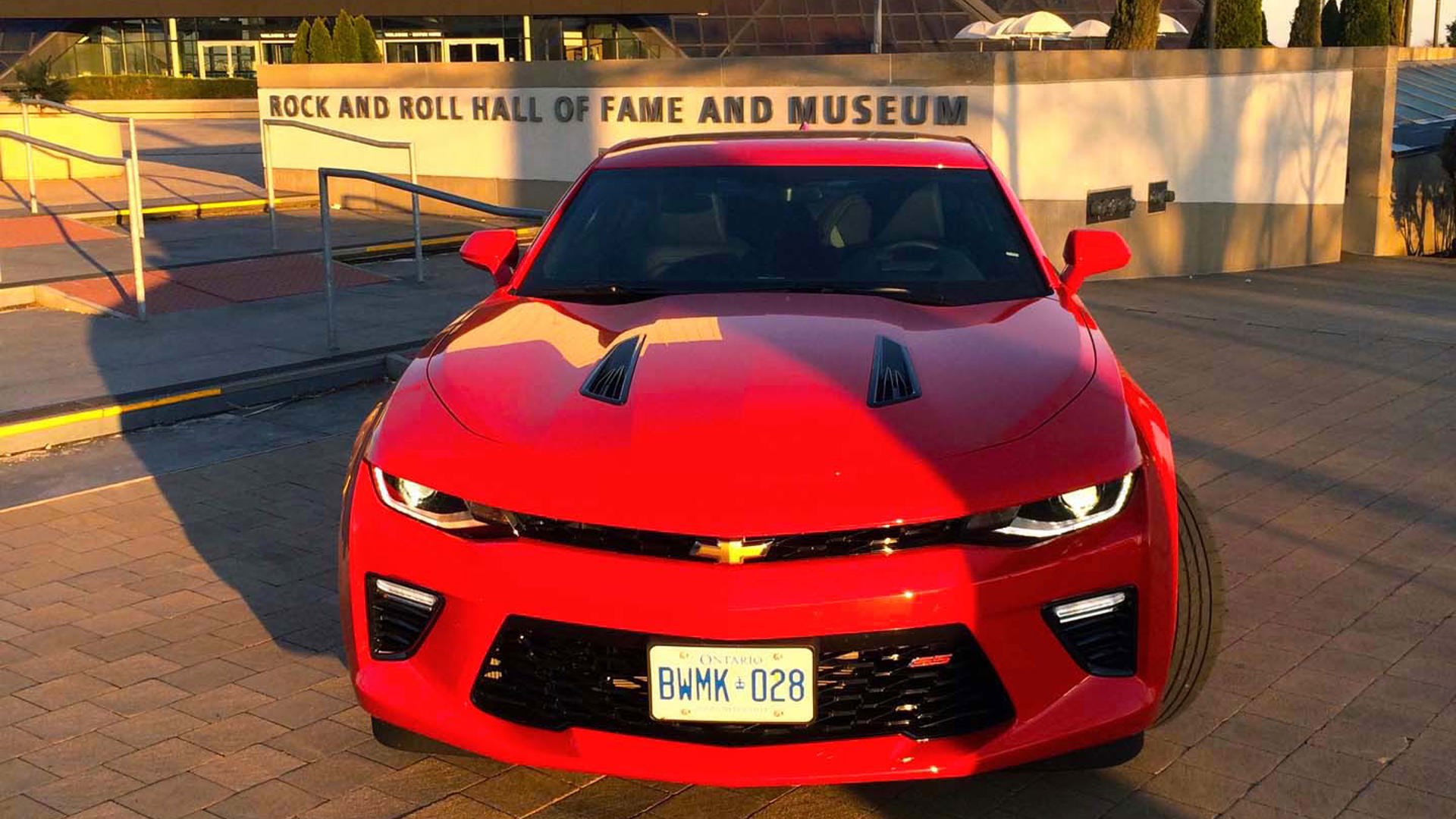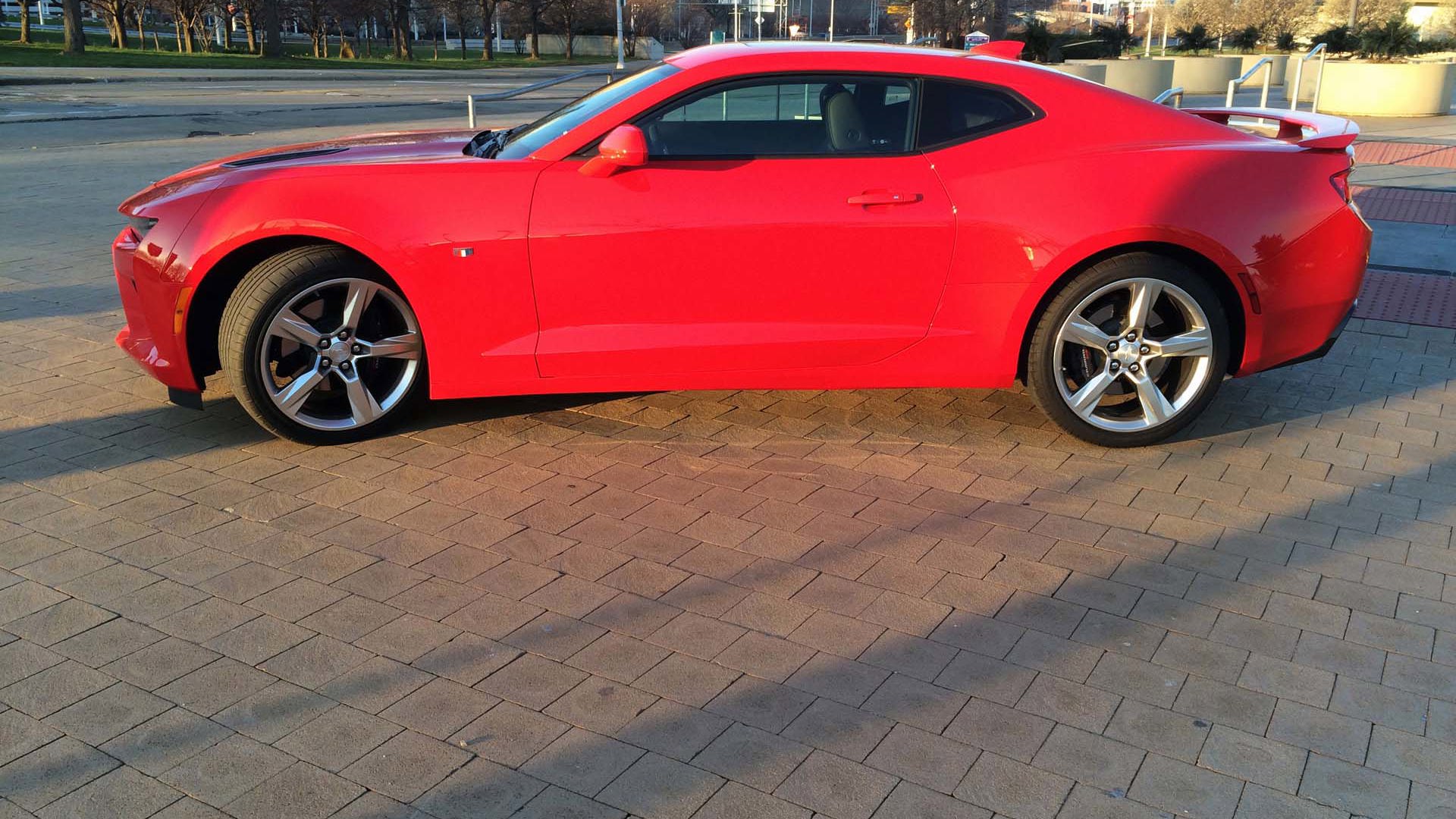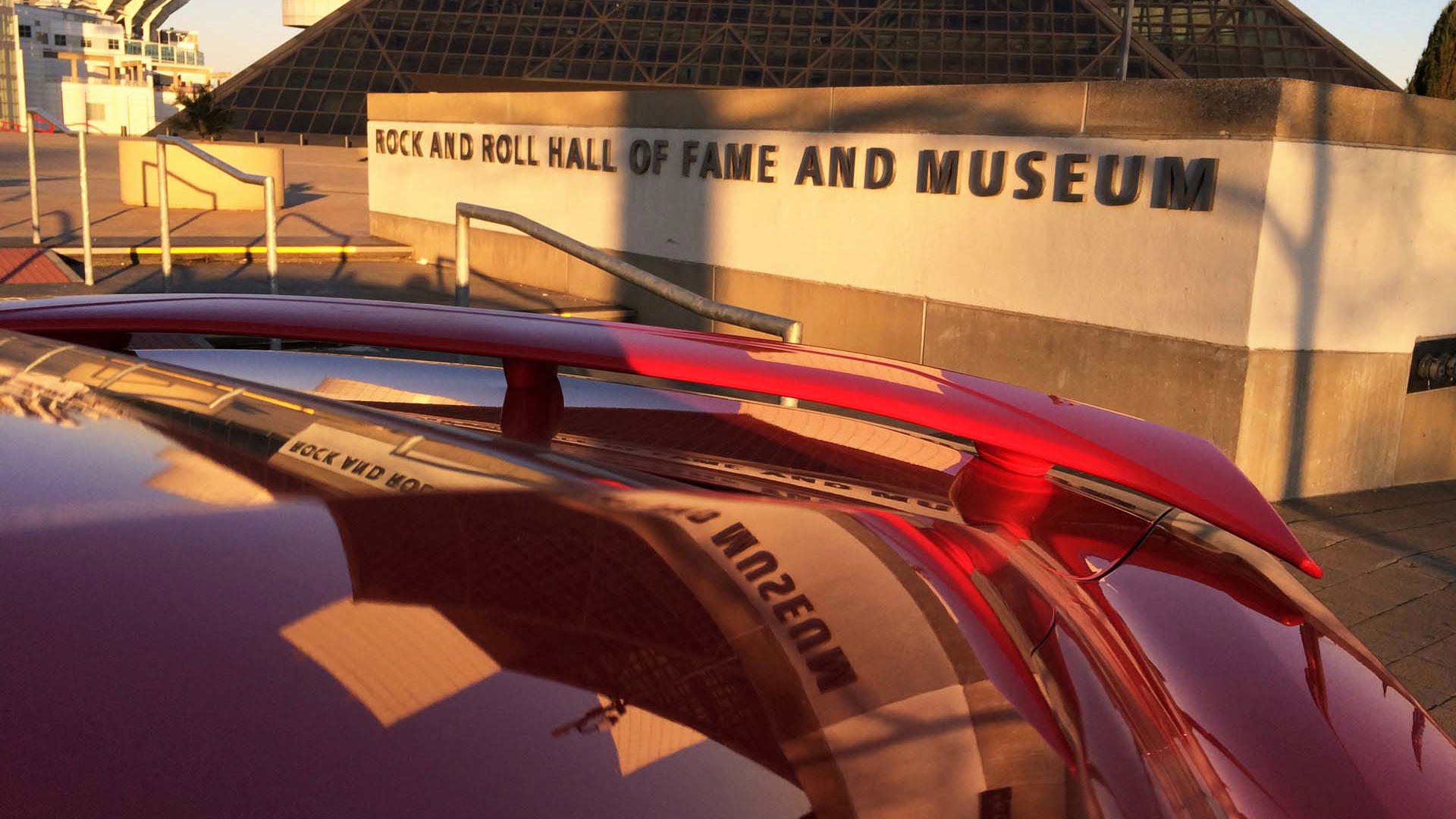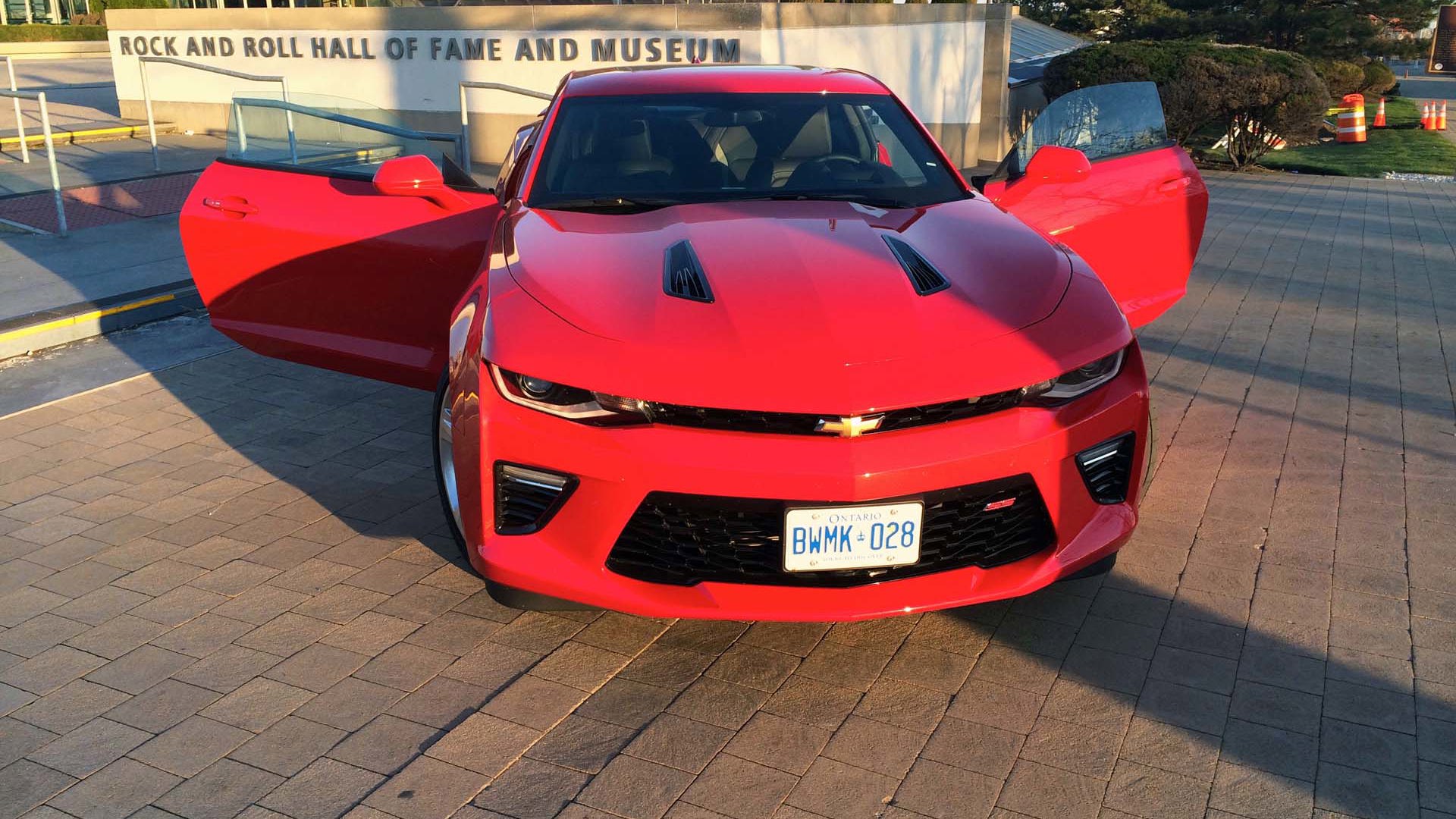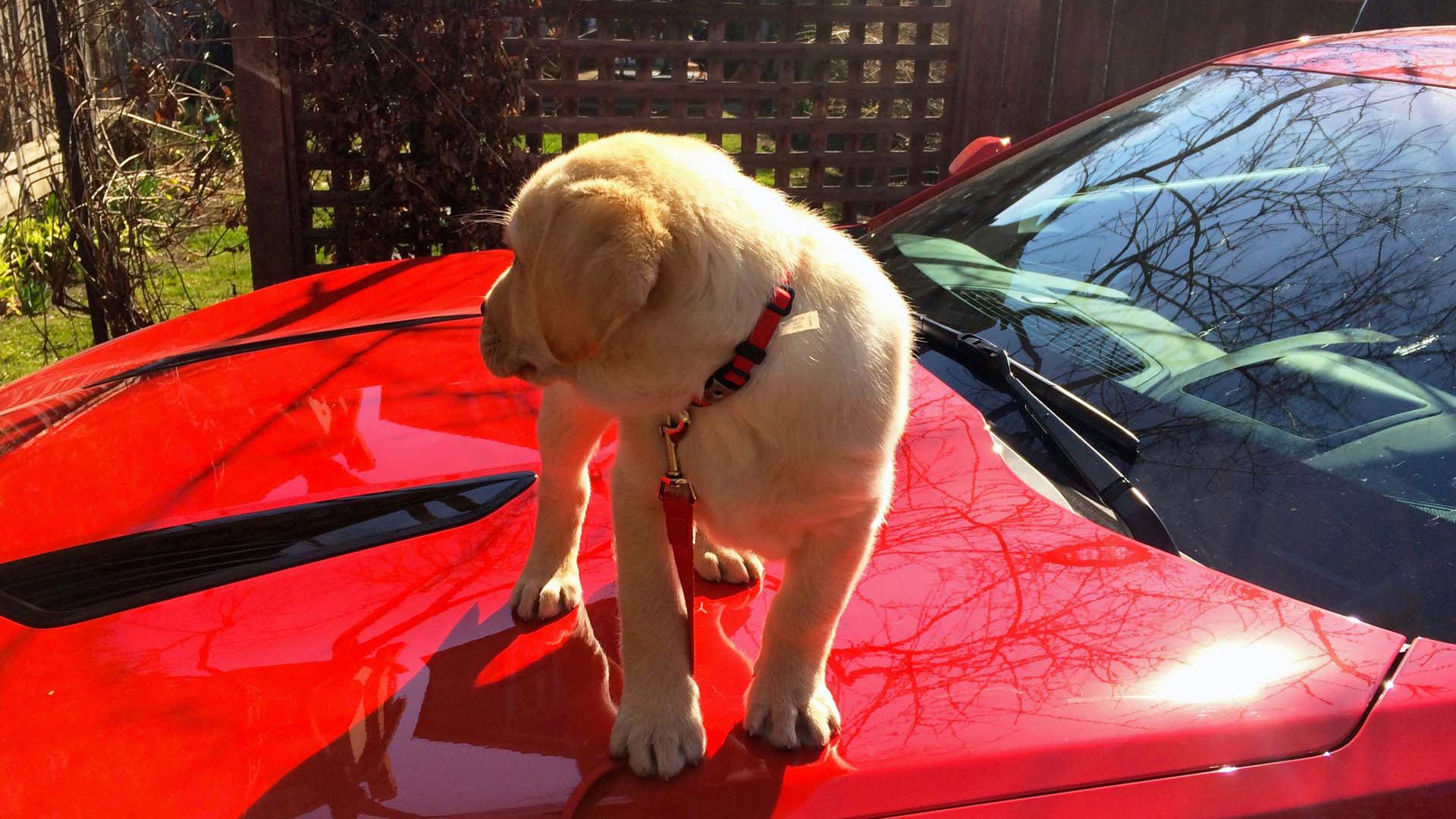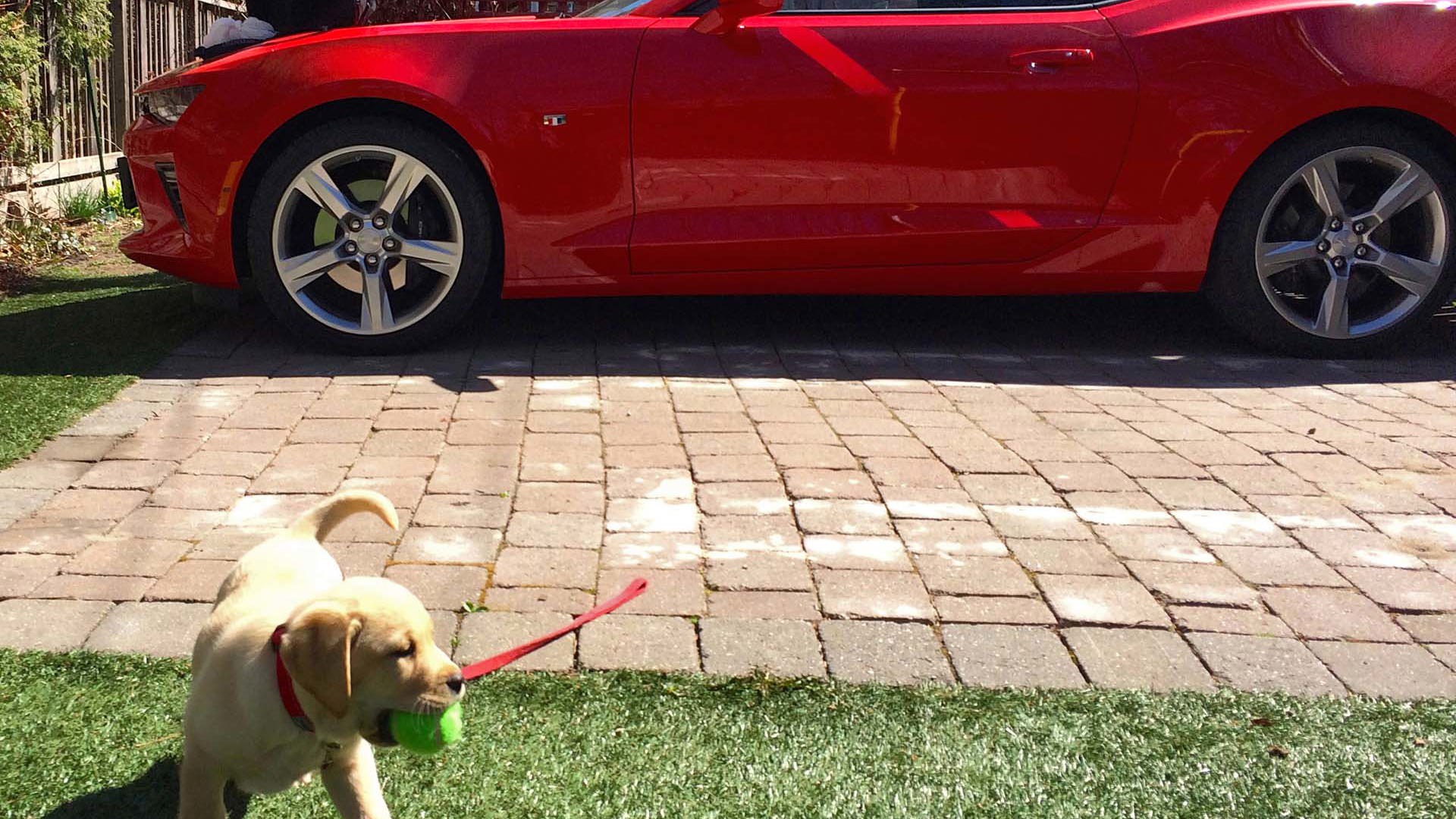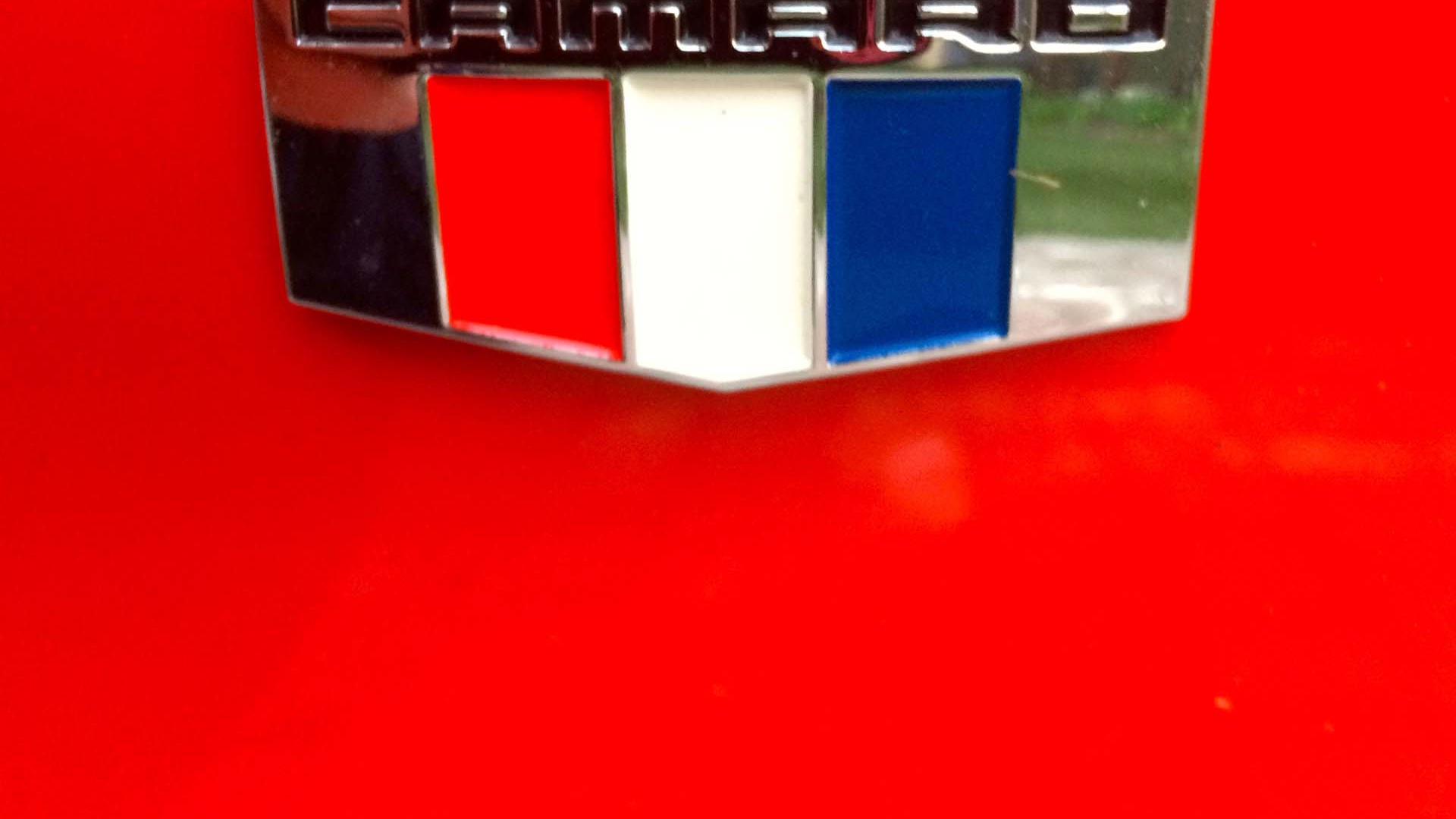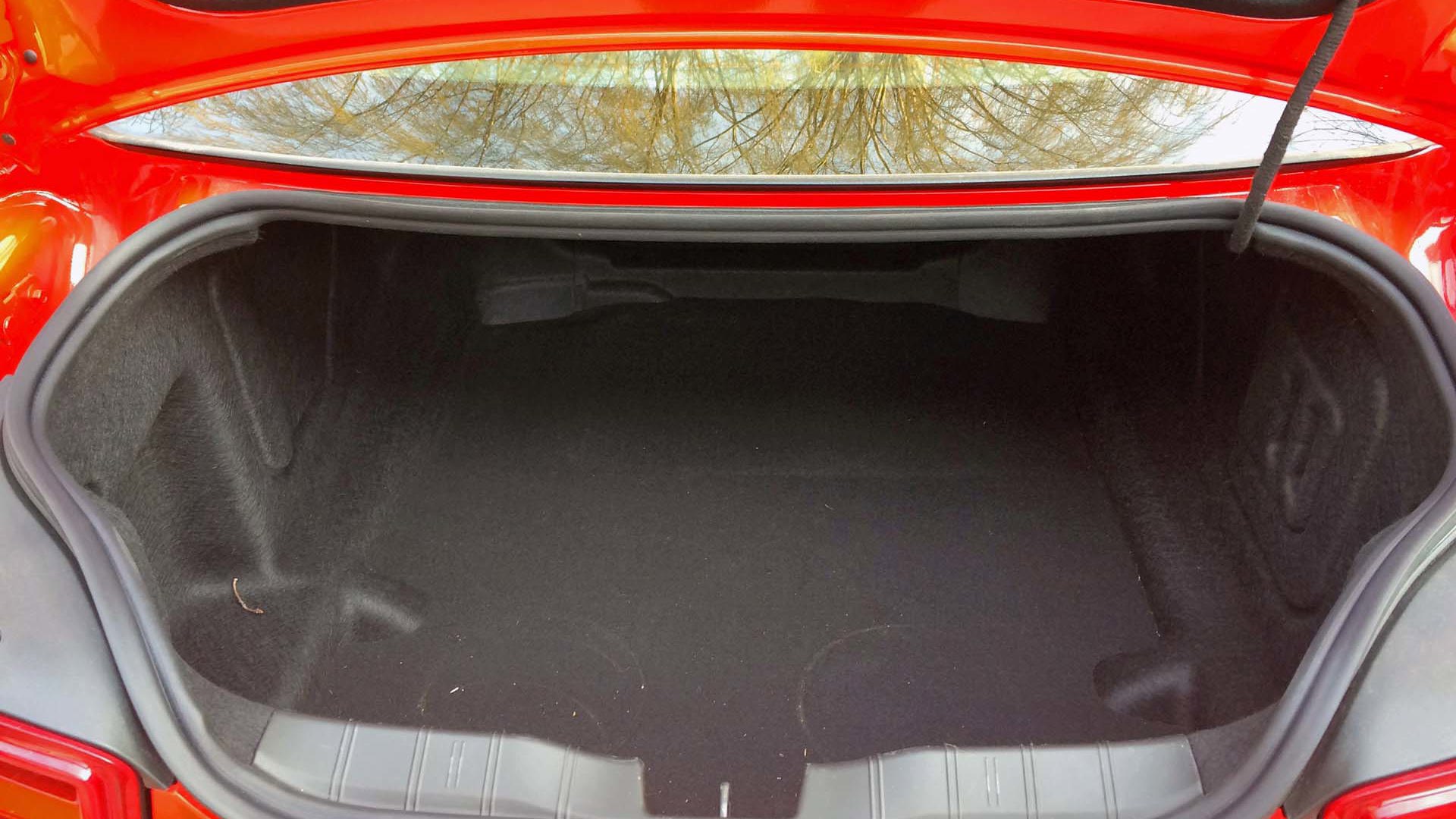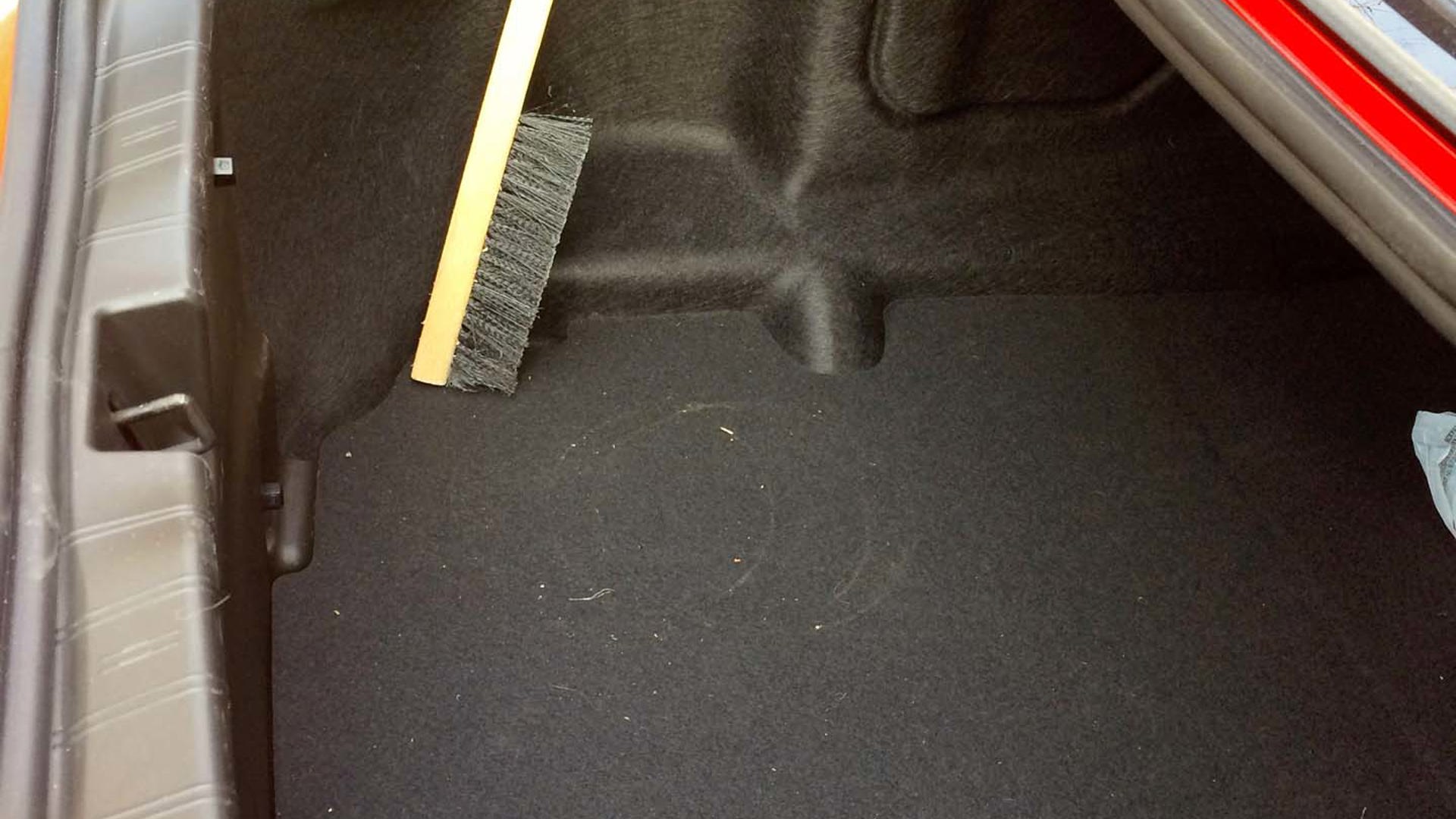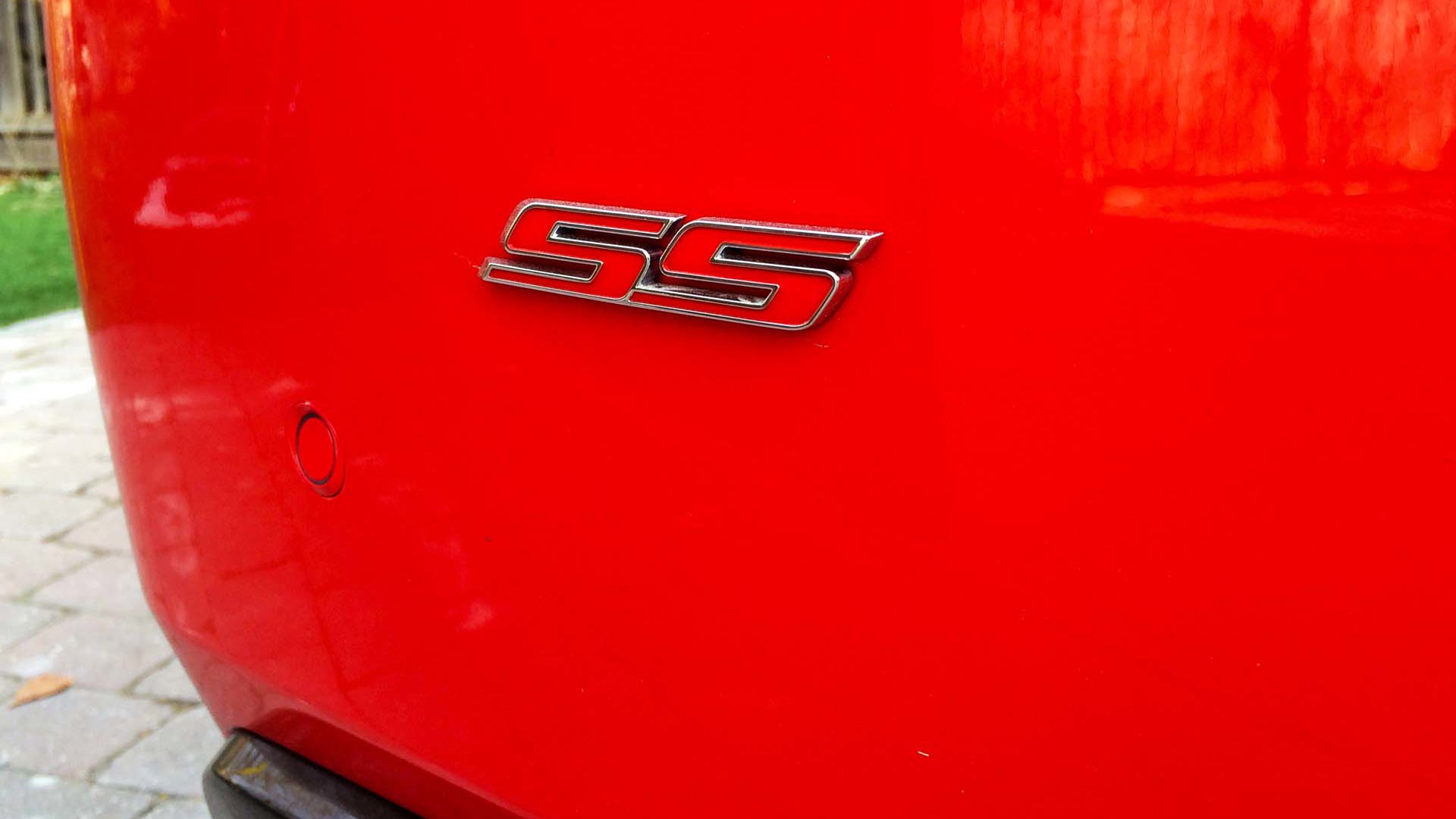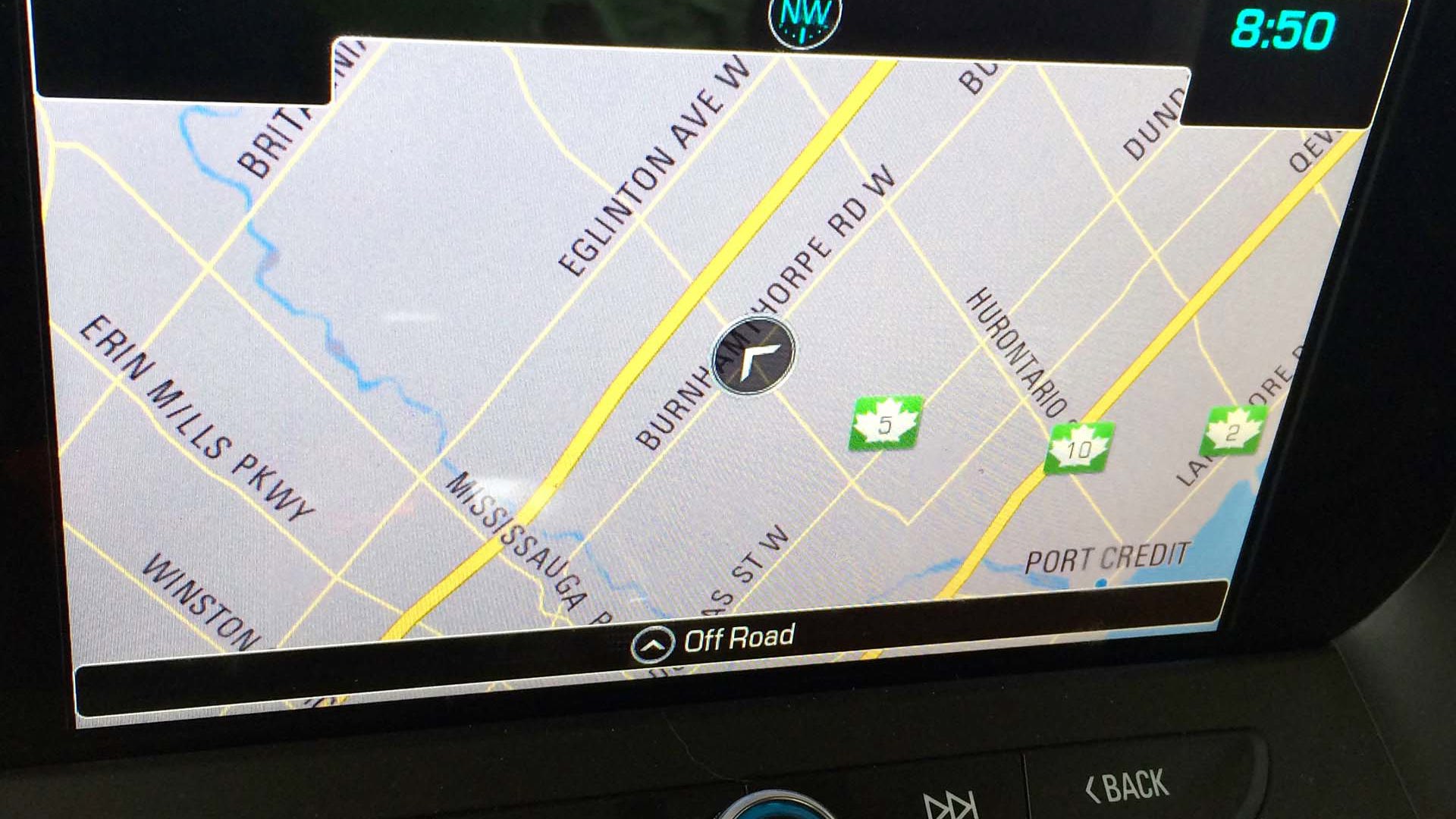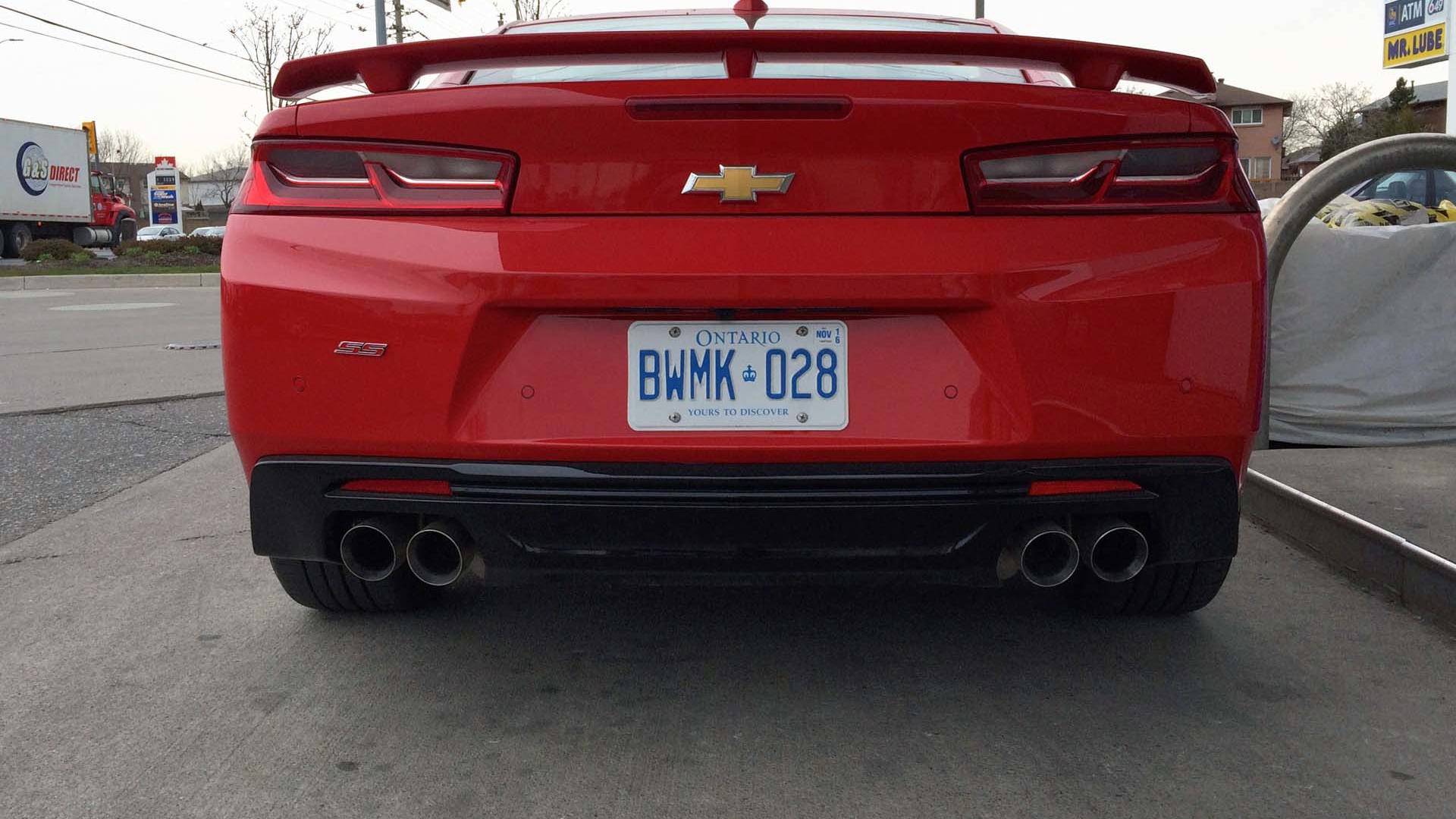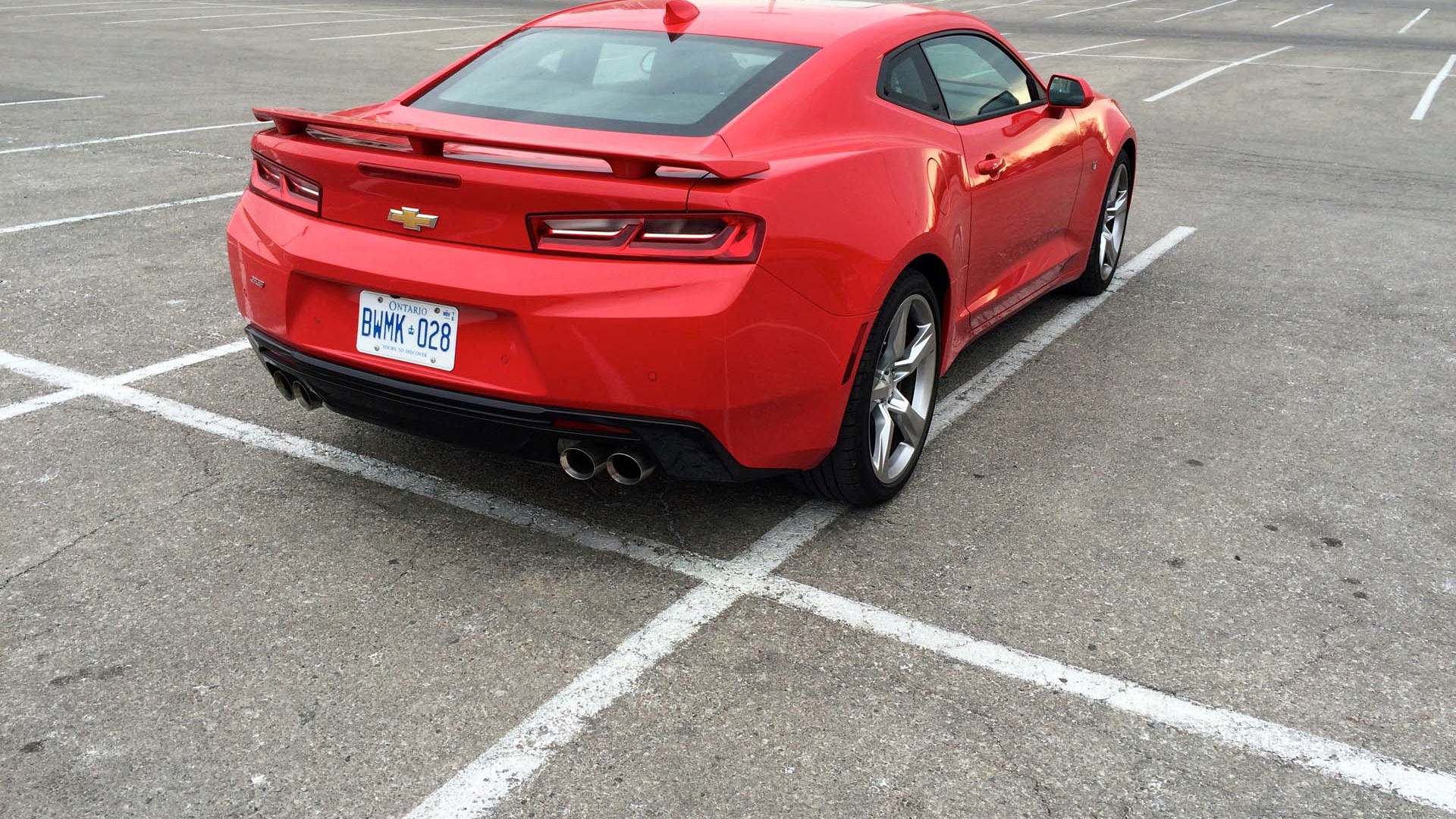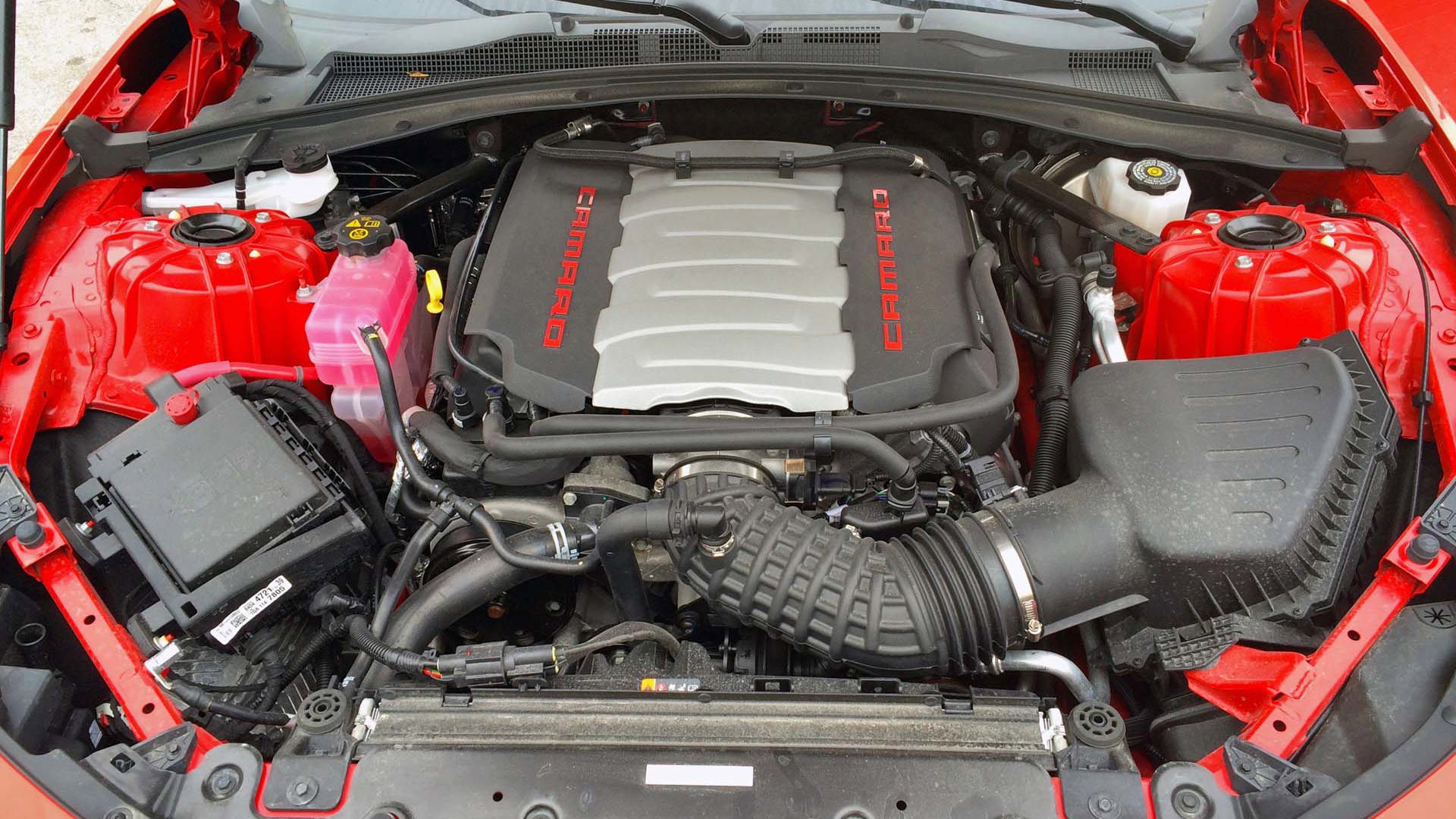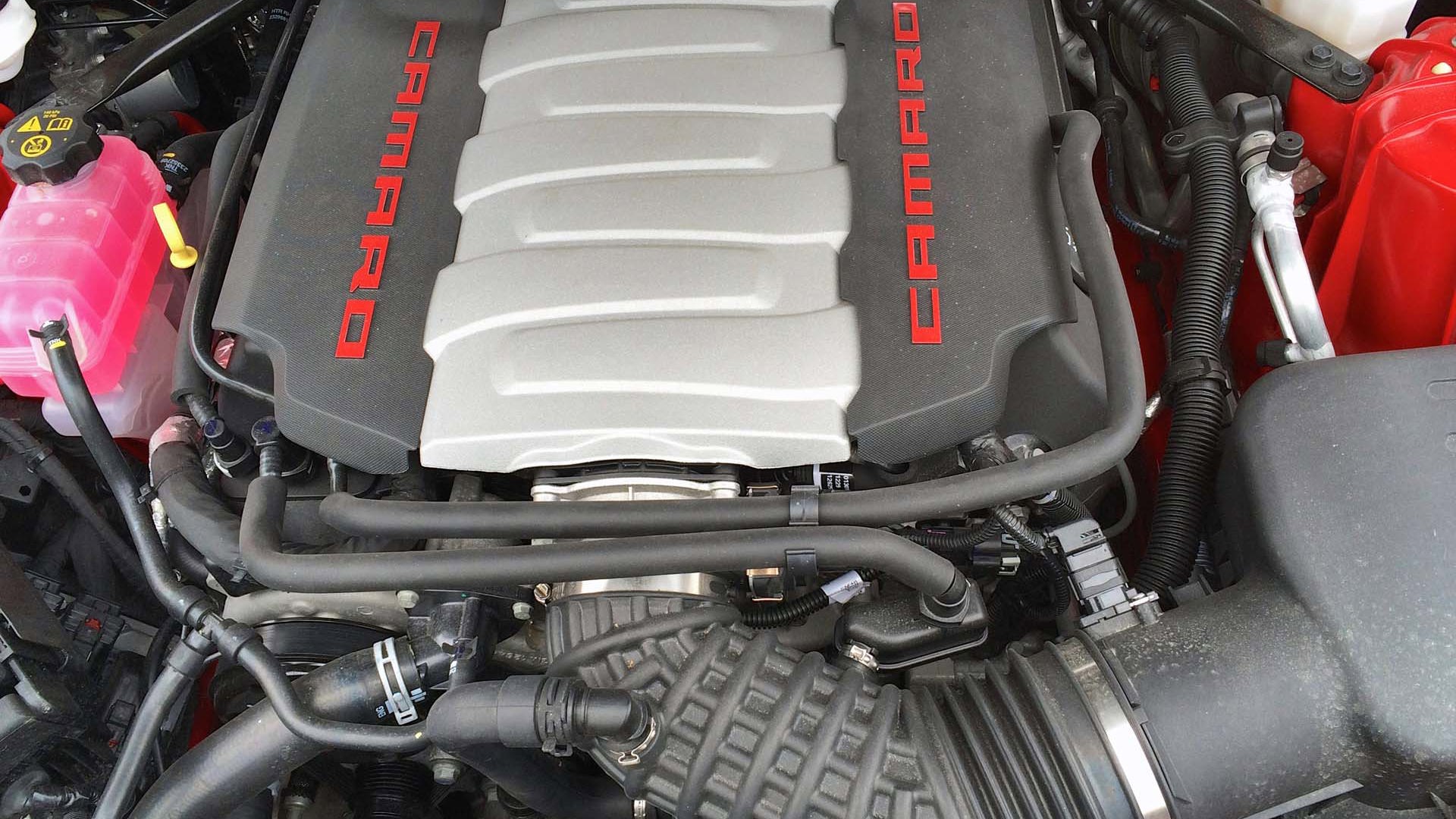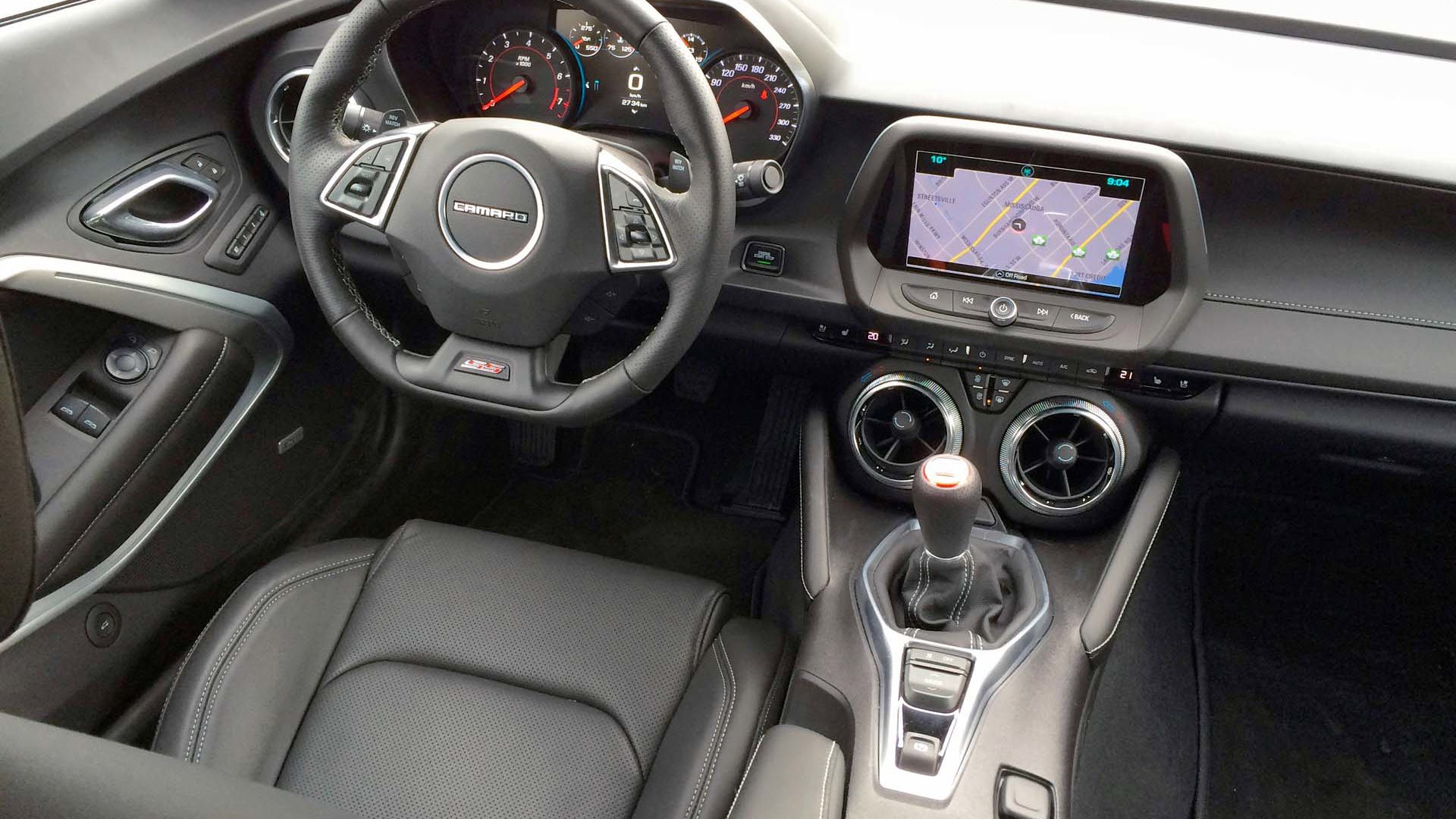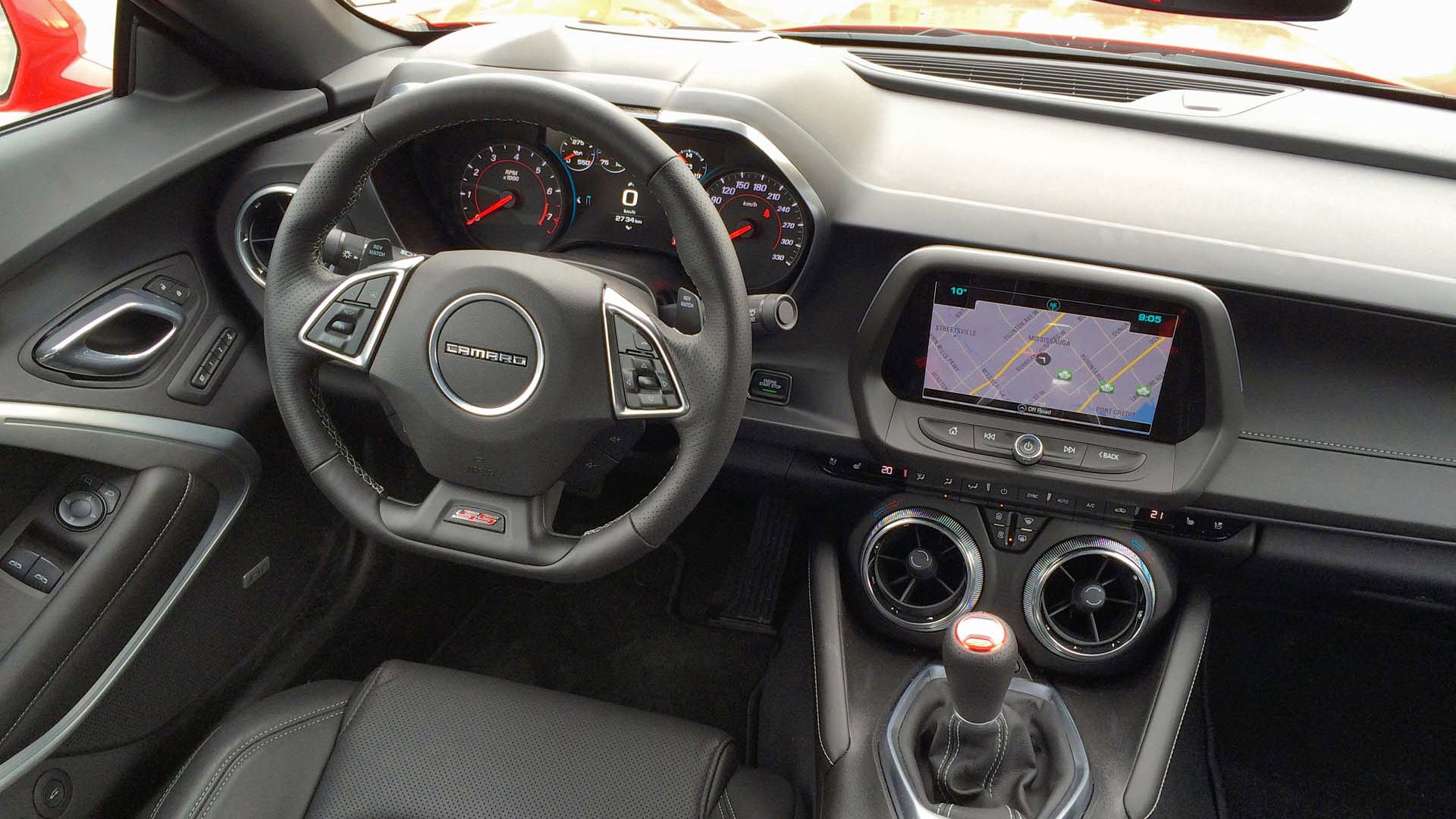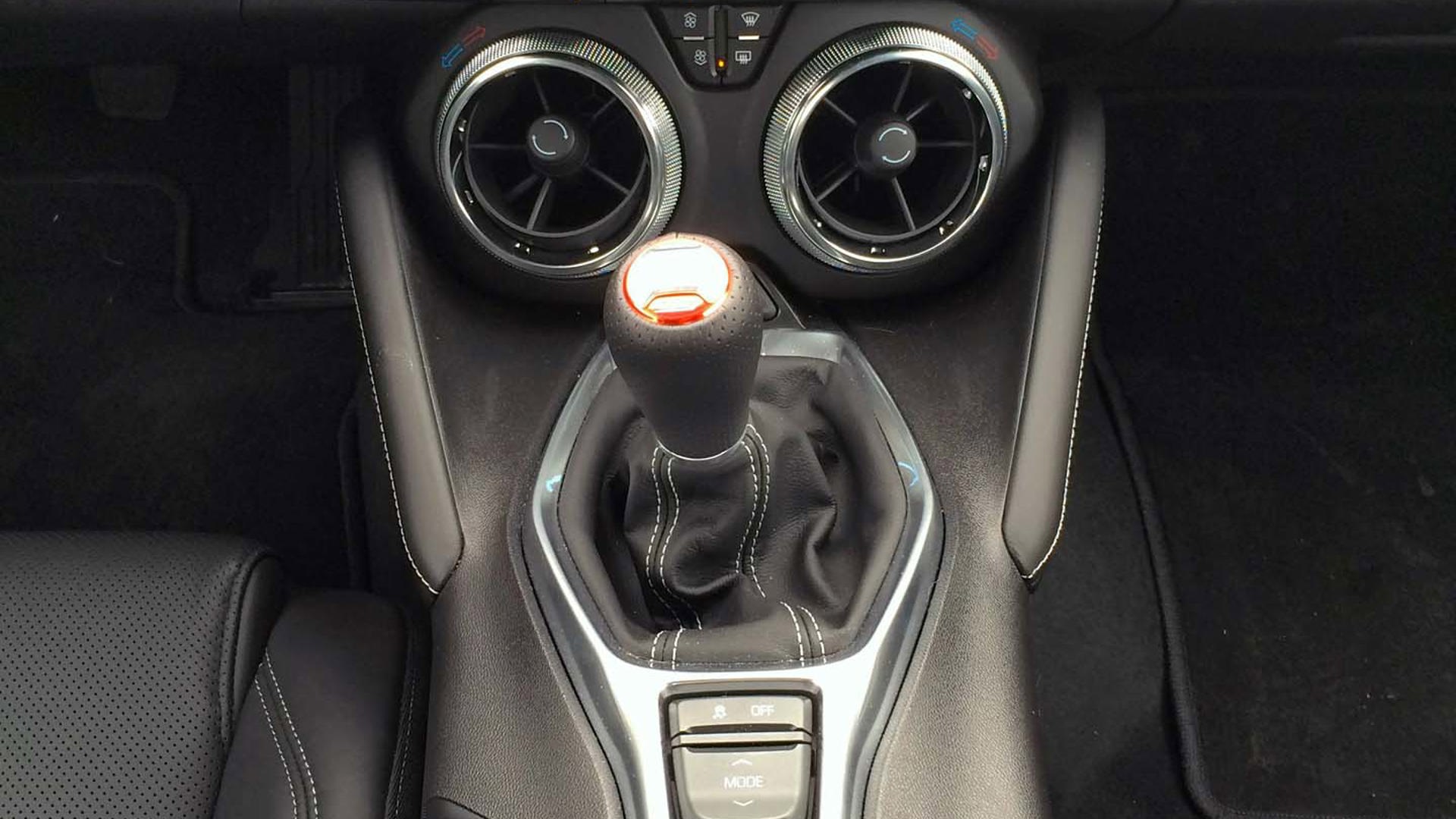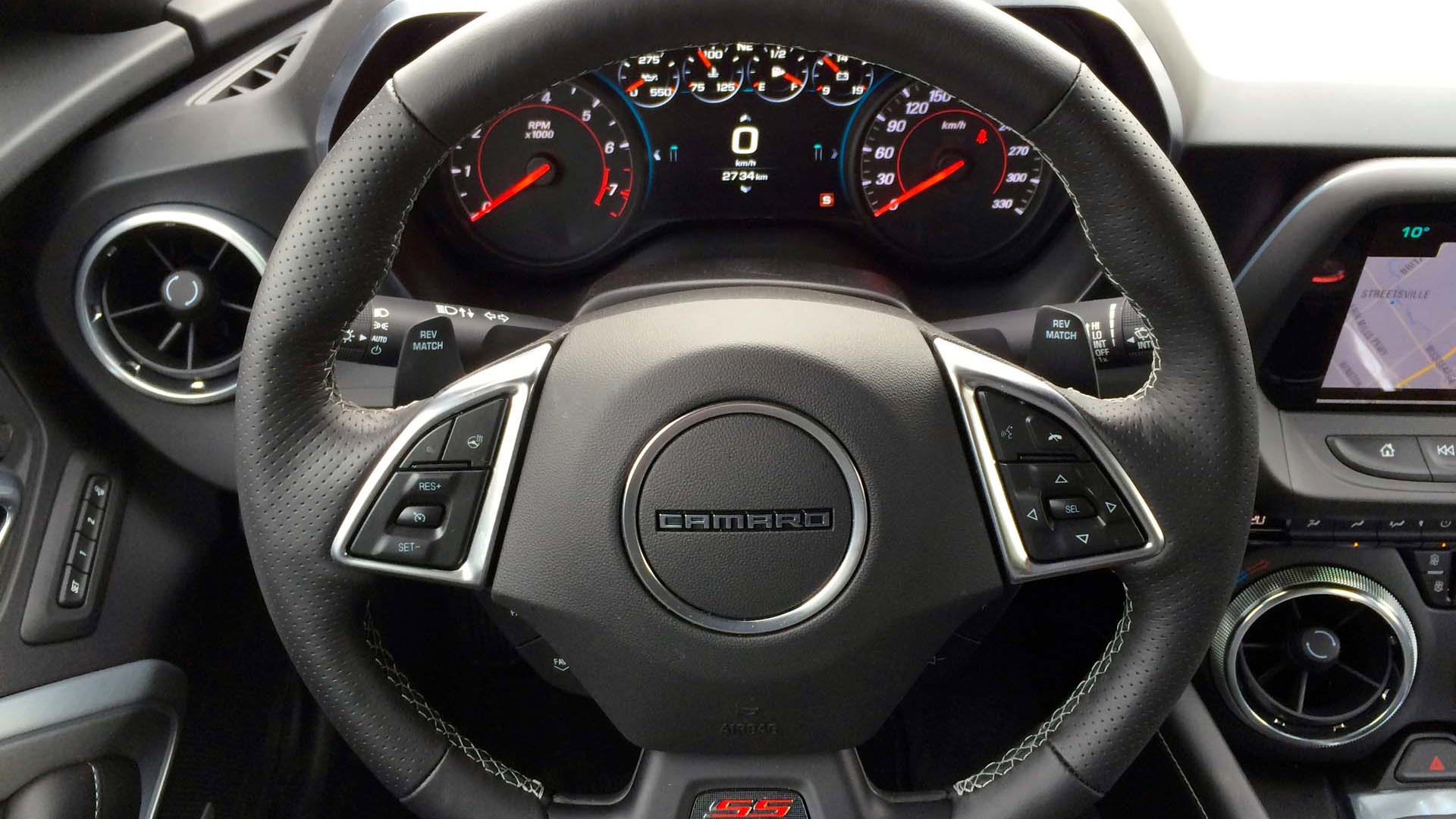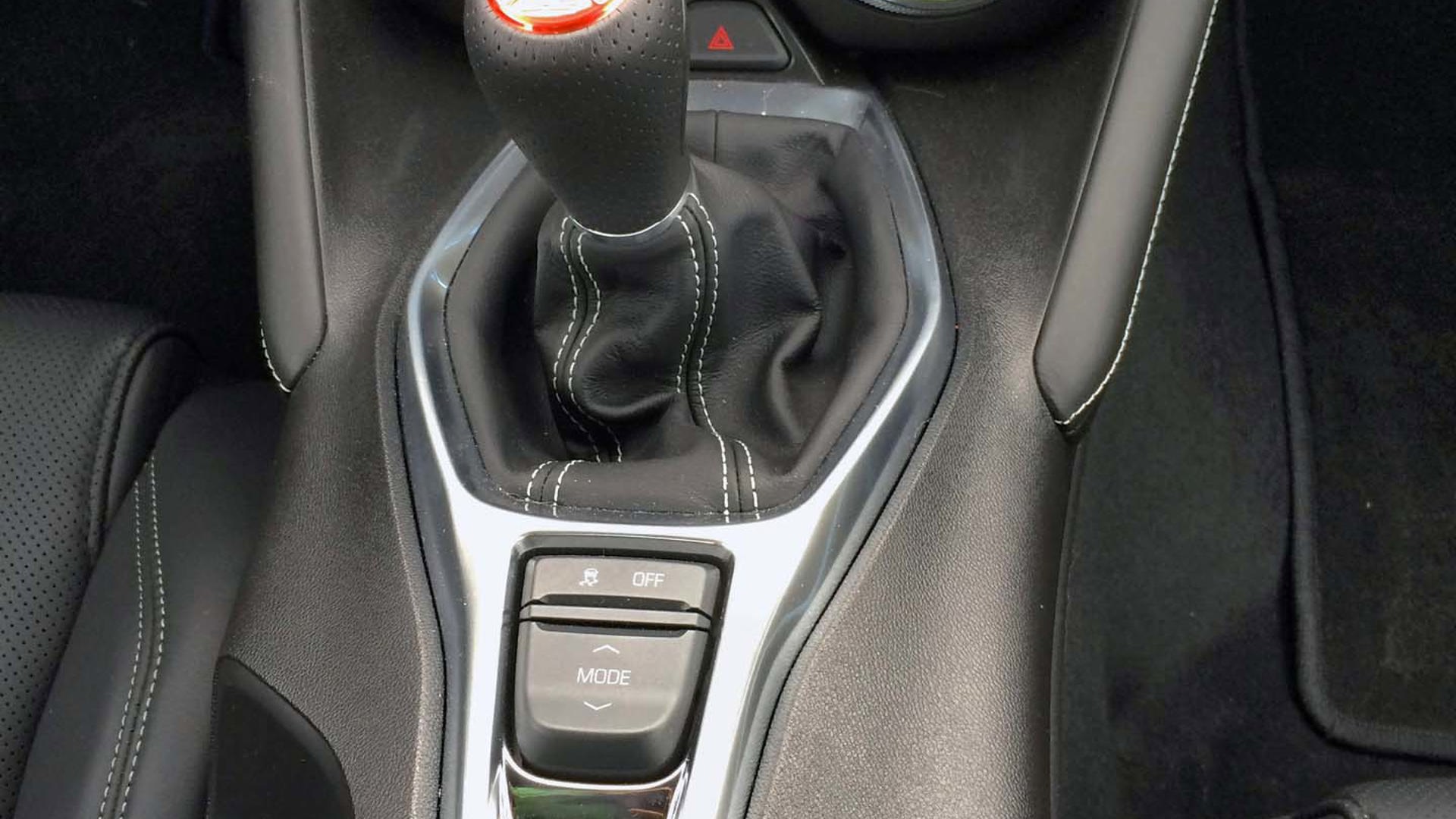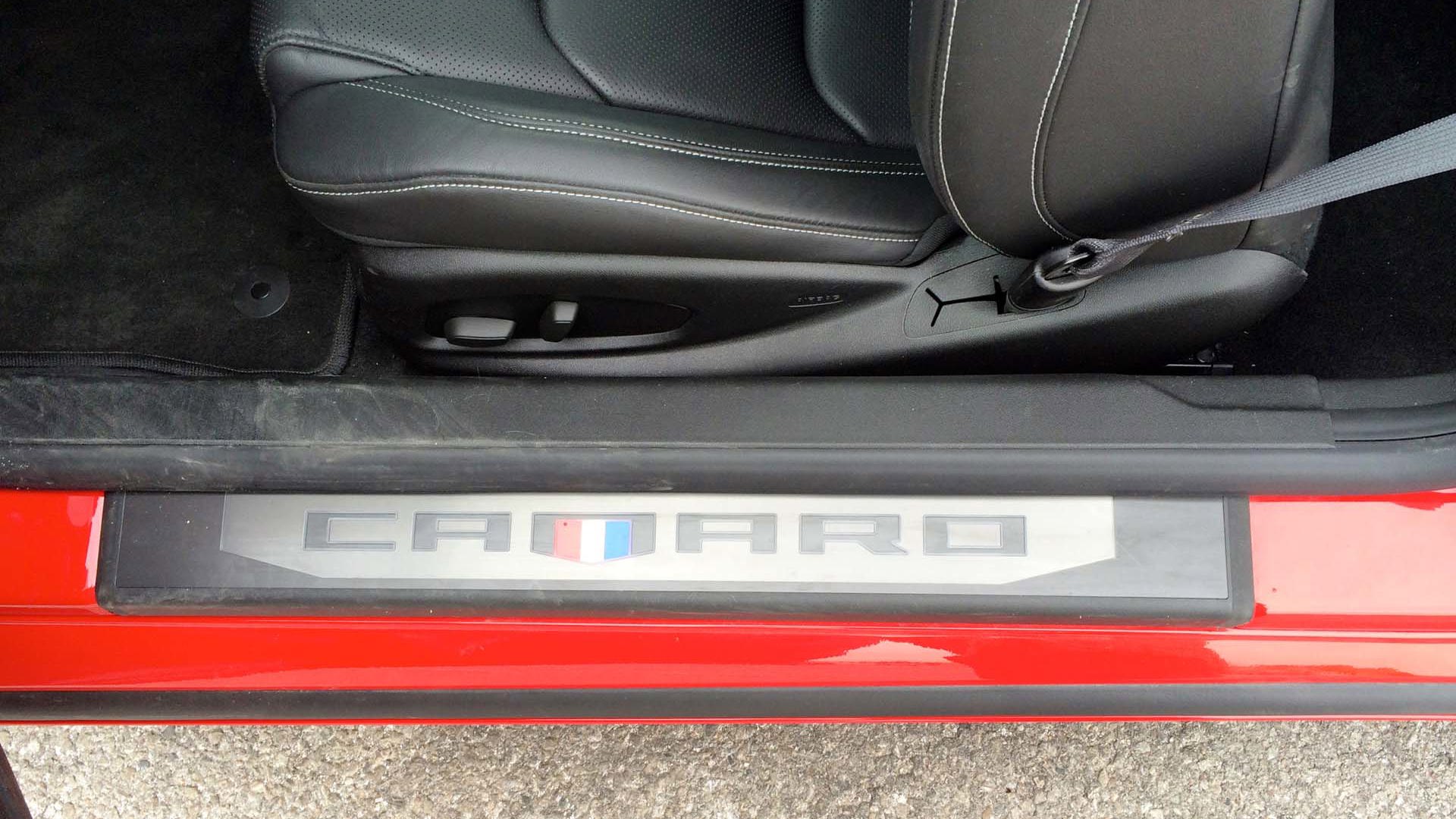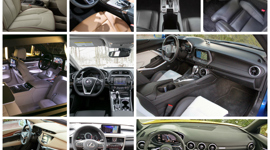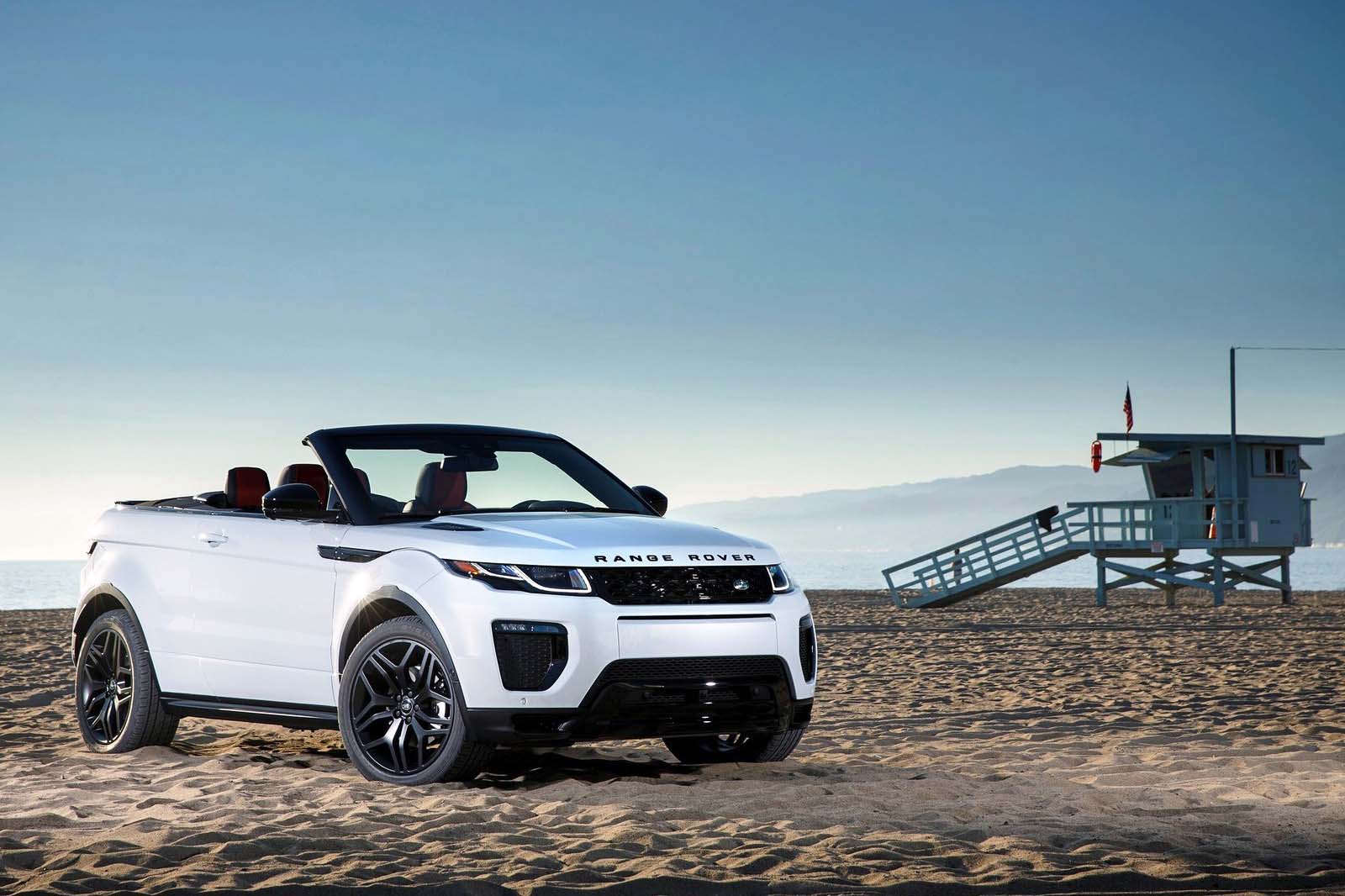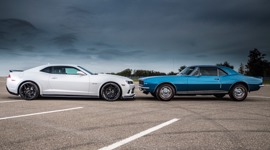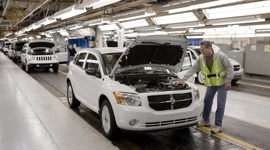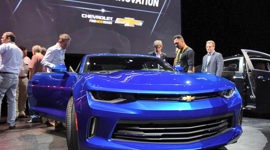It wasn’t what my wife and I had planned. Cleveland’s Rock and Roll Hall of Fame (RARHOF) was supposed to be some nostalgic grotesquerie, frozen in time like Bill Murray’s Groundhog Day — but with a more predictable soundtrack — awash with mulleted air guitarists vocally fuzz-boxing off-key.
A plan? As an antidote to midlife crisis, I would completely surrender to it, journeying to RARHOF, a pinnacle of Americana, in an unnecessarily phallic American vehicle, the 2016 Chevrolet Camaro 2SS Coupe, the pinnacle of the Camaro pyramid (until the 1LE officially arrives, and then the Z/28), whose 6.2L direct-injection eight-cylinder engine, stimulated by a testily fine-tuned standard transmission, is huger than this sentence.
Yes, 6.2 litres, no typo: Camaro’s biggest engine ever. Midlife crisis, be gone! Drown amid this nuclear fusillade of torque, accompanied by bombastic power chords emanating from a Bose premium audio system.
The idea was inspired by the classic rock satellite radio station, broadcasting live from RARHOF. Half its DJs are crusty old women with vaguely off-putting names like Dusty Gargle. Their voices sound like they spent the summer of love naked on acid, smoking sugar cane and lead, yet somehow get wheezily excited when Frampton Remains Alive or Clapton Lays Down Sally for the third time in one weekend. We would contact them and ask to meet on air.

As with most ideas (at least most of mine) the reality was quite different.
Although the 2016 Camaro SS is as imposingly muscular as a jailhouse weightlifter working through two years less a day, it’s laser nimble. The magnetic ride control amplifies data directly from the road, like the solid body of the Gibson Les Paul, an innovative leap forward. With no sound hole, suddenly treble notes vibrated harder without echo — cutting through, more like a trumpet now than a harp — making it possible for guitarists to upgrade from rhythmic accompanist to lead. Likewise the Camaro’s balletic balance, supported by precision steering and variable drive modes, converted it from a power sprinter to decathlete.
Redesigned with intelligent refinements throughout, this car’s more thoroughly rock ‘n’ roll than ever. It’s just that I’m not all that rock ‘n’ roll any more. Or nimble. Getting in and out was never elegant. And all that power was quite overwhelming at first.
Speaking of power, a better name for the Camaro’s colour — Red Hot — would’ve been ArRedst Me! Vibrant and shimmering, it somehow glowed like flame and hovered like the floating of a red bullfighter’s cape — to attract cops. And, sorry to harp on this, oh, is it powerful! At 100 km/h it was still sluggardly down around the 1,500-cycle point in the fifth of six gears, like some male lion lounging beneath a kapok tree.
So I decided early that we would never safely get the most from this beast of refined machinery. Throughout the 600 km in the US, we rarely exceeded more than 10 or 15 km/h faster than the posted limit.
Not that we could speed into sixth and flirt with police traps while still in Ontario. Our trip began Friday morning on the first warm day of spring after a particularly nasty few weeks of late winter frigidity. With the dawn of spring, we also experienced the first days of road despair. I mean road disrepair. I mean road repair.
No, despair.
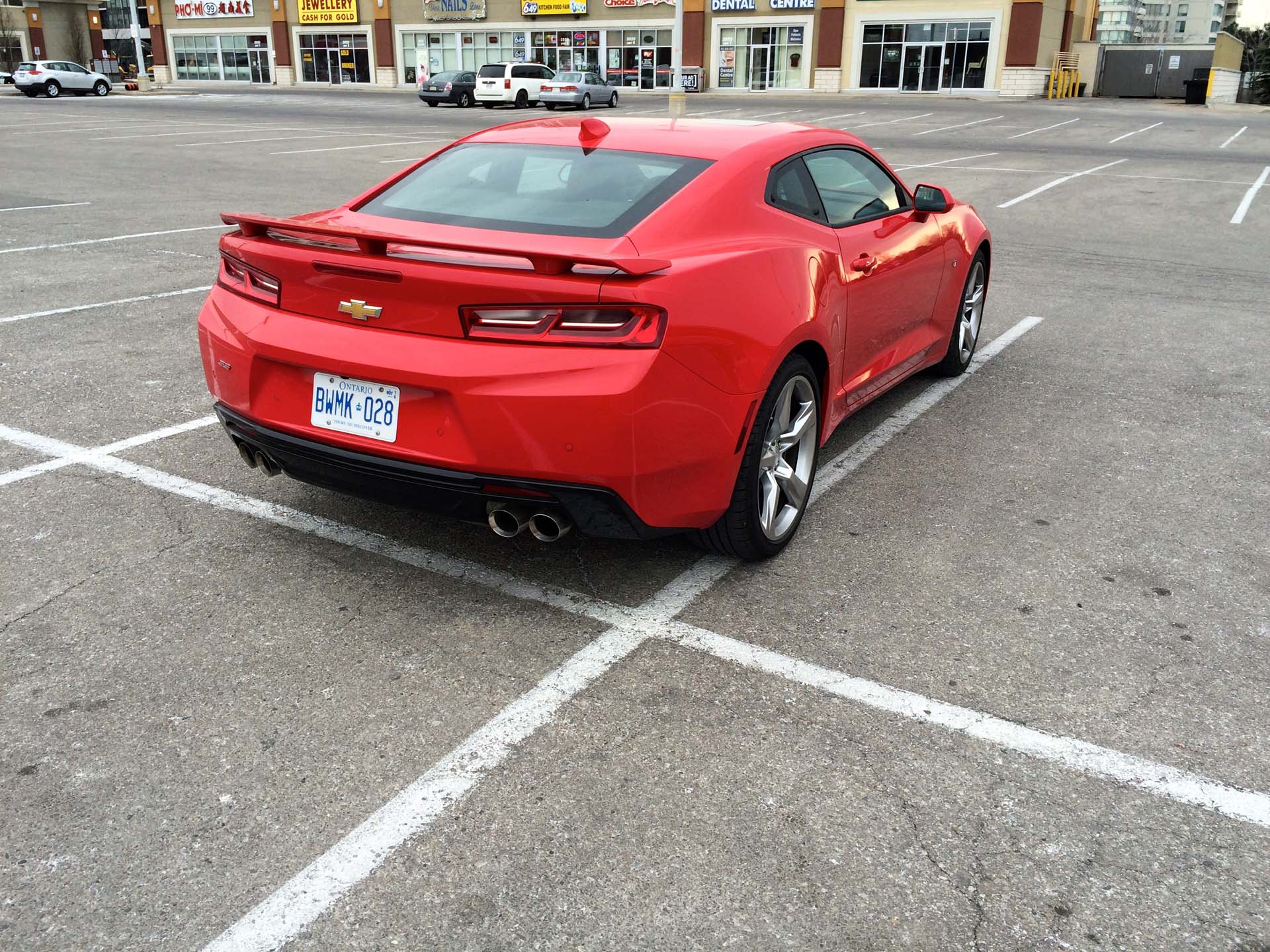
The Camaro SS shot out of downtown Toronto like a bat into construction.
True to its namesake, Ontario’s Queen Elizabeth Way is wrinkled, slow and constantly crowded by thousands of overexcited patrons. Once we were past Hamilton, the traffic moved reasonably but there was never enough elbowroom to drive like we were the subject of a Bruce Springsteen song. So, in no trouble of being caught speeding, the Camaro followed the rim of Lake Ontario then paralleled the Niagara River to the American border.
We stopped in Buffalo for a rock and roll burger on a warming sun-starved patio in hipster-cool Allentown, meeting our longtime and long-haired friend, Greg, who appropriately looks like the ghost of Gerry Garcia. An aging hippie, “Uncle Greg” did sound mixing and filming for acts like James Gang (Joe Walsh), The Who and Fleetwood Mac before selling out for a career in advertising. More interesting, he was actually on campus and studying at Kent State, Ohio (60 km down the road from Cleveland) in 1970 when the National Guard opened fire on students, most of whom were simply observing and a few of whom were peaceably protesting. A week later, Greg also saw Neil Young premiere the famous protest reaction hit, Ohio, with just a guitar and microphone. Then he saw the same song premiered again, completely outfitted with Crosby, Stills and Nash a month after that. Music heals.
The 300-km drive from the westernmost end of Western New York, through a sliver of Pennsylvania and along the southern lip of Lake Erie to Cleveland is as boring as an extended drum solo on Librium, but the road was well maintained. Plus there was no construction to speak of and we were in no hurry. So, we listened to the RARHOF’s nostalgic radio station, increasing the volume each time a good song came on. There were plenty.
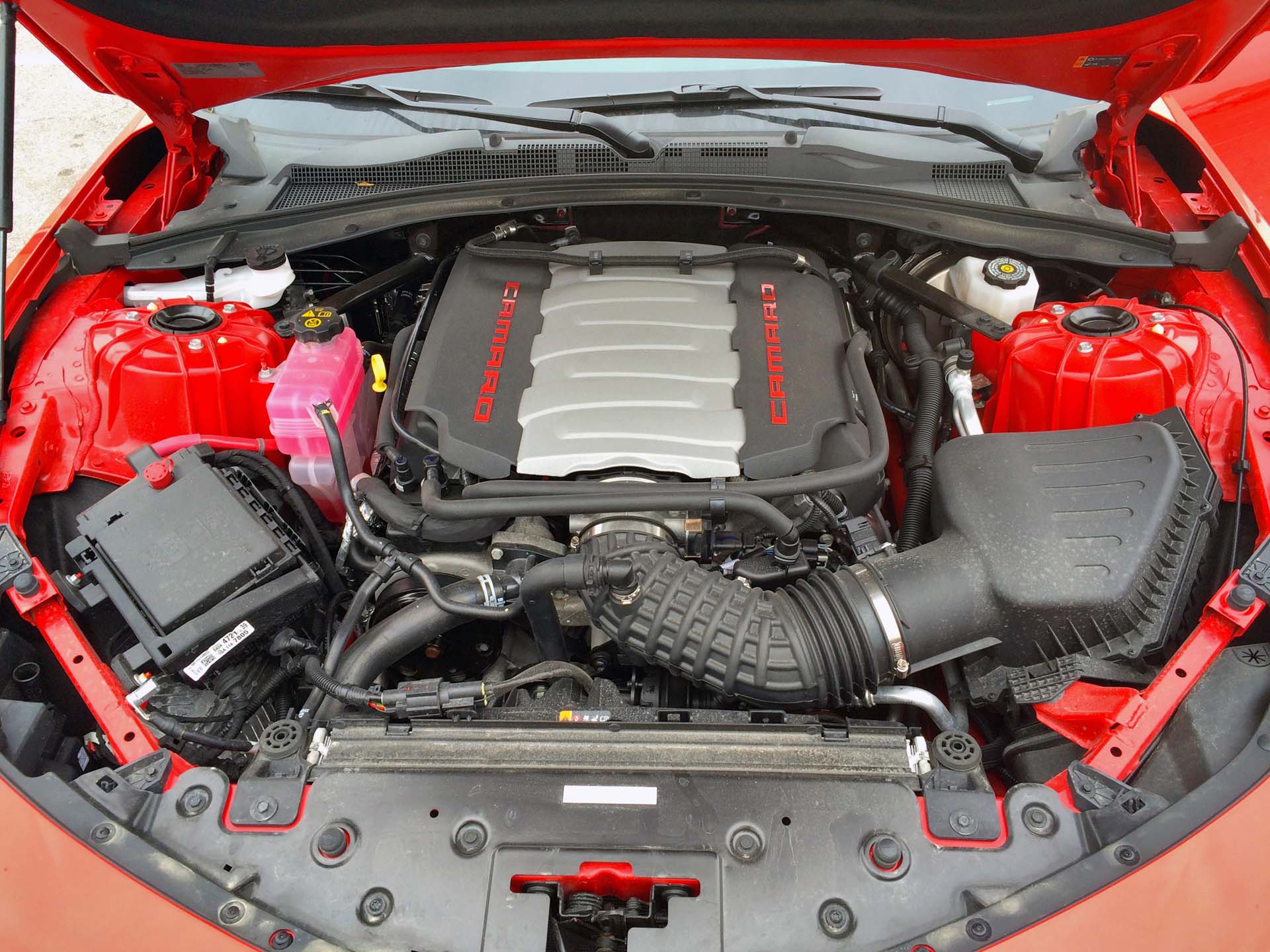
So occasionally I couldn’t help feeling my foot get heavier. Cue Springsteen.
If the power bar-chords launching Highway to Hell were a car, they’d be the 2016 Camaro SS. If David Lee Roth’s pantheresque calisthenics circa 1981 inspired the performance of a car, the result would be the 2016 Camaro SS. If the hostile stance and glare of Miles Davis onstage circa 1964 were designed into a car, well, you get the message.
Like the best rock and roll, the Camaro SS is a good mix of attitude, refinement and excitement. Note the brash rear spoiler, serpentine hood vents and twenty-inch aluminum wheels (unique to the SS trim). Visually, it’s mostly attitude. Miles Davis would approve.
The interior is a king-size bed of fine leather; James Brown would approve. The trunk may be short as a Ramones song but is also deep as a Robbie Robertson lyric. The backseats came with almost zero legroom, stridently rendering them as unnecessary as the extra necks on John Paul Jones’s acoustic freak of science. Instead of buttons for climate control, fat rotating dials surrounding the vents allowed us to feel the right temperature fast, like the superiority of a whammy bar to bend notes versus some soulless pitch-control algorithm.
The drive modes were revelatory; each one was like discovering a new favourite band. The conservative Tour mode was challenging in the city. Imagine walking a hungry pit bull through an abattoir. The quick flick to Sport or Track modes transformed it to a sleek champion greyhound. Reading my driving style, the computer offered helpful tips like “Try shifting straight from 1 to 4 to economize fuel.”
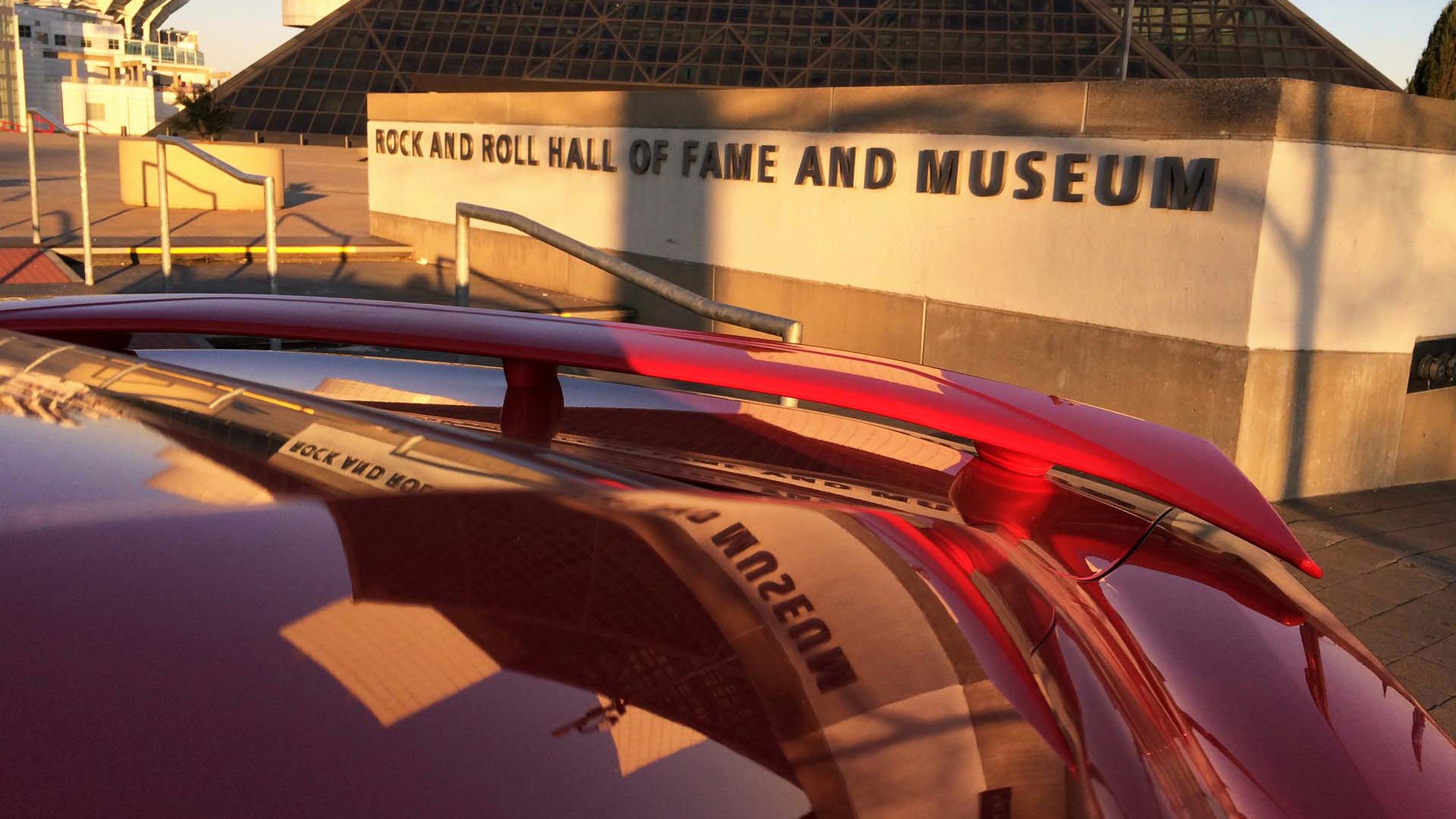
It’s actually the Rock & Rock Hall of Fame and Museum: Not what we thought.
Saturday: So the RARHOF was actually RARHOFAM. In truth, it was much more museum than Hall of Fame™. The exhibits were thoughtfully curated; the clear explanations were respectful, didactic and probably peer-reviewed.
We’d expected Vegas meets American Idol: some corporately poisoned parade of inflated grey or bald heads behind sunglasses and beside ugly trophies, whose bloated unrecognizable white faces are really only there because they successfully managed not to die (which, to be fair, is becoming a pretty impressive feat these days — whoops, Prince just left the building during this piece’s draft).
We’d expected to see Lindsay Buckingham’s coke spoon necklace or the iron banana Gene Simmons packed in his spandex. But LA BS and ego were negligible. Cleveland was a wise choice as location.
The $23 admission fee was probably focus-grouped carefully to determine exactly what price would dissuade redneck knuckle-draggers from bothering. Most visitors were older and more respectable than us; the few hammerheads we did see were carefully studying the exhibits, no doubt trying to get their money’s worth.
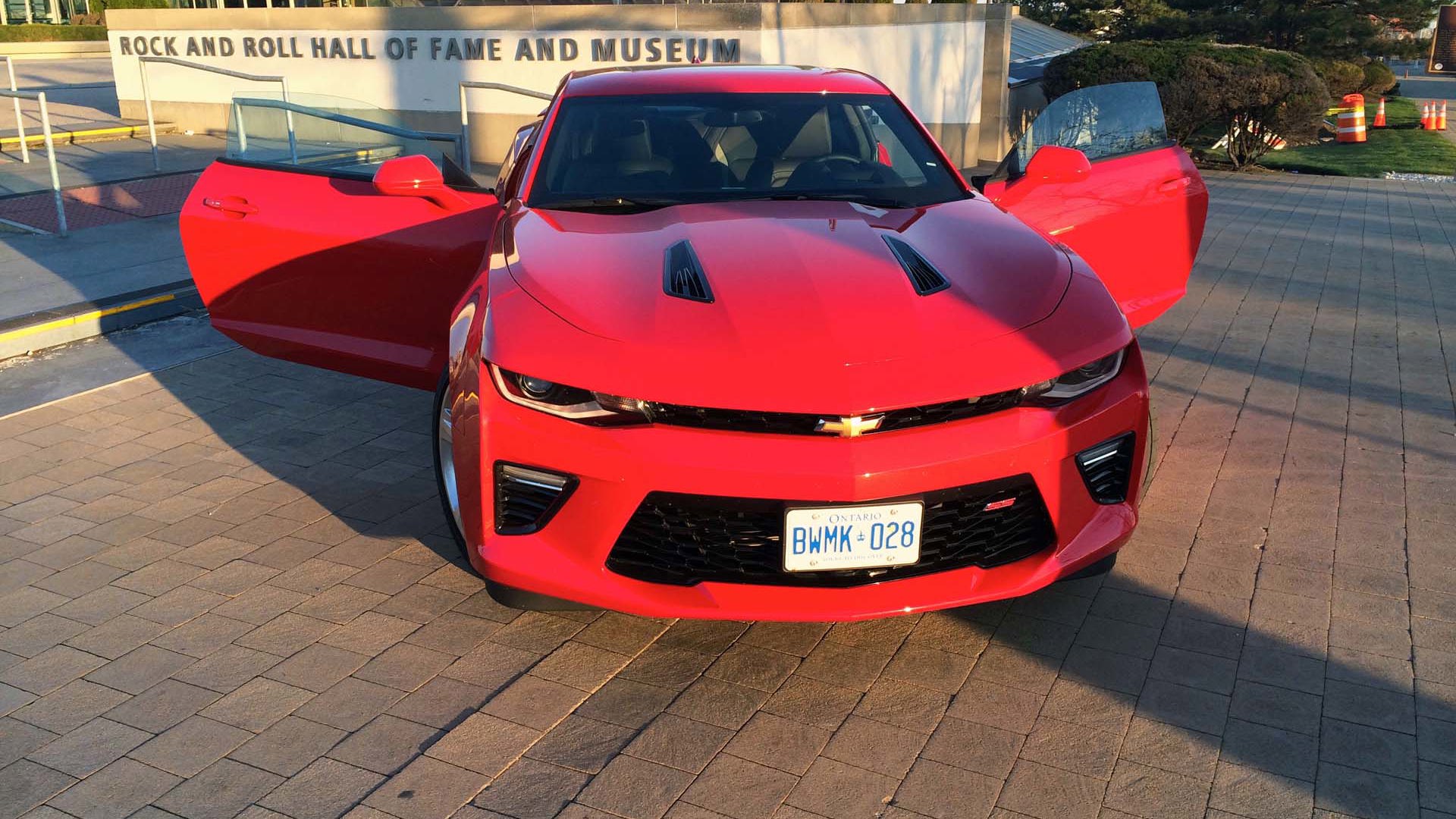
Also, it was much more roll than rock.
The expression rock and roll was African-American slang, a euphemism for human copulation. A rock, on the other hand, as Elvis Costello once observed, is a dull lifeless thing. Which would you rather think about when playing or hearing music: sex or geology?
The RARHOFAM building is pyramidal and the majority of the base floor is devoted to roots with lots of pre-history leading into and through ‘50s and ‘60s; gospel, delta blues, Kansas City and Chicago rhythm and blues, plus lots of southern country and some hillbilly. But the base of any pyramid is also where the majority of the real estate is.
The corollary? There’s less space upstairs to mark the ‘70s until now. Even the biggest names are treated as links in a chain. Put it this way: there was lots of Staples Family but I saw no Kiss (they were probably there, just not prominent).
The DJs weren’t onsite on the day we chose to visit. Some event was happening and access to the studio was blocked. We didn’t care. The lessons in the museum easily trumped the need to touch fame. (I had tried emailing ahead of time but their corporate website denied direct access to DJs and I didn’t have the energy to descend into their social media like some high school girl with a crush.)
Outside, people who saw the Camaro smiled and nodded, understanding why someone would want to bring this pinnacle of American attitude to this symbol of American pop culture on Lake Erie, like an offering of gratitude.
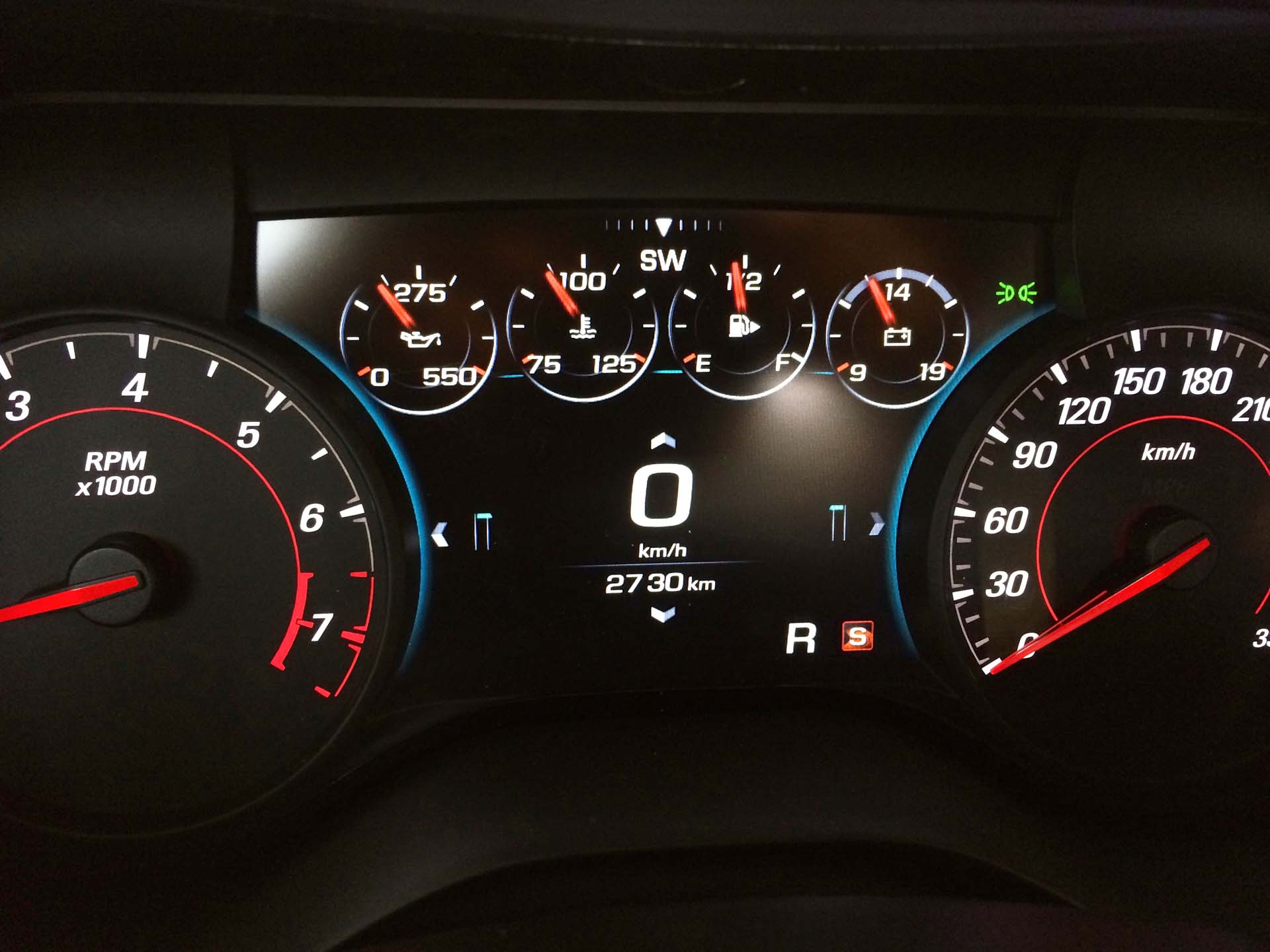
Epilogue 1: A lesson.
Maybe RARHOFAM shouldn’t be so much destination as inspiration. We went out for live music that night, catching up-and-coming singer-songwriter and multi-instrumentalist Andrew Bird at the legendary House of Blues. The openers, a space rock act from Brazil, were appropriately spaced and so boring even the bass player chose to sit down onstage throughout the final number. I wanted to send them a tray of amphetamines the way people used to send us beer when I played in bands. But Andrew Bird was brilliant. He wisely opened with his hit, so people wouldn’t spend their whole evening shouting, “Play your hit!” The rest of the act was magic — as live music should be. One and half hours later, everyone leaving was smiling. Music unites.
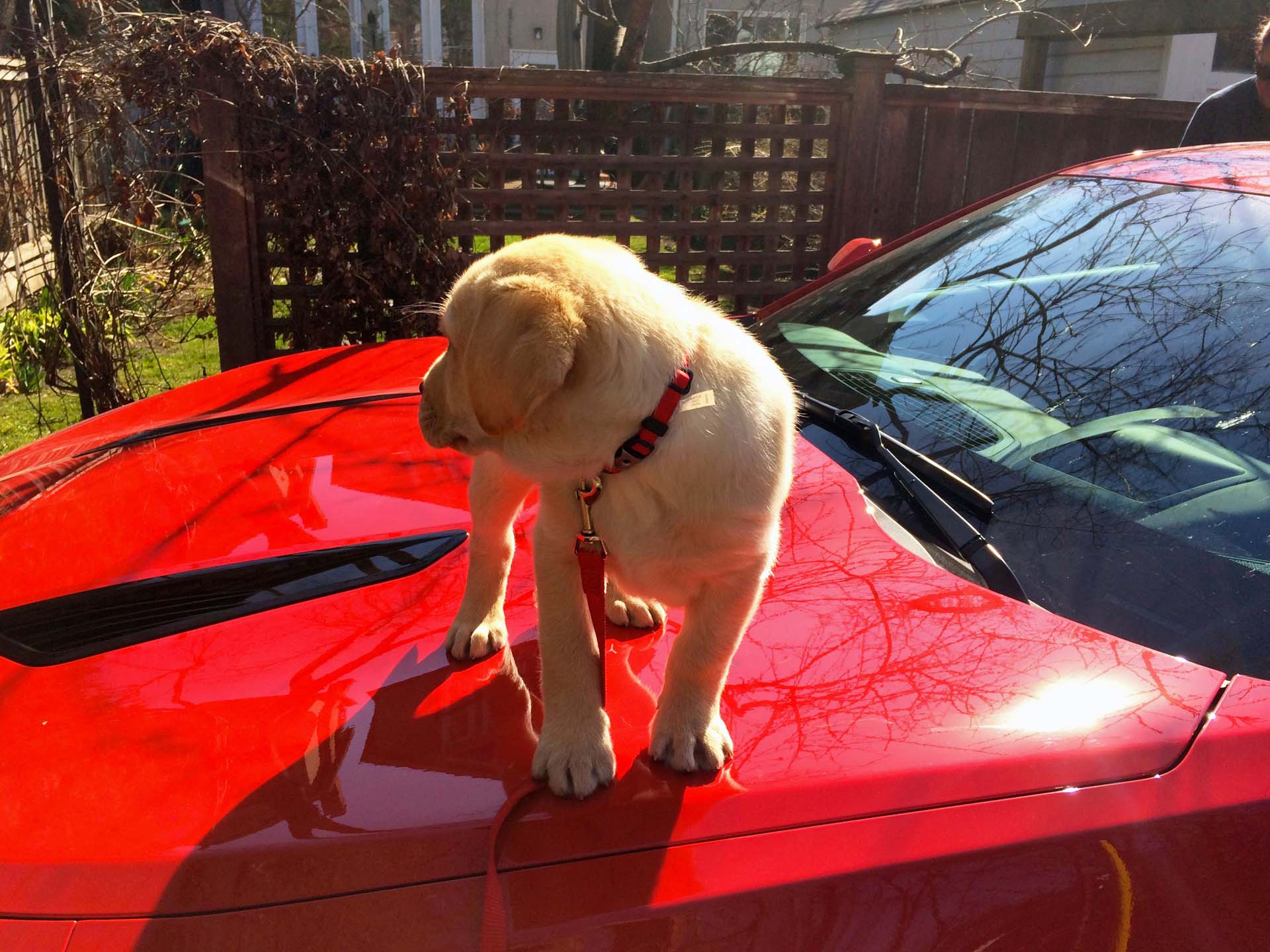
Epilogue 2: Moving on.
A greater surrender to midlife crisis came at the tail end (literally) of this same weekend: a puppy. On Sunday morning, we drove the Camaro 525 km from downtown Cleveland to the end of the lonely 407 highway (literally) in Claremont Ontario to fetch Orson the retriever. He was tiny. The rumble of the Camaro’s engine, which emits 455 hp and 455 lb-ft of torque and whose explosive ignition could still startle David Bowie and Glenn Frey, lulled little Orson directly into a happy sleep. We spent a good deal of this final bit of the trip in sixth gear.
Competition:
An affair
Half marathon
Plugs, Botox & Liposuction
Finally learning French


